Factory sourcing for fashion manufacture course - how to find a production partner
A lot of new entrepreneurs struggle to find a suitable factory for production + aren't sure where to begin looking. This post takes a look at how I can help you to find a manufacturing partner...
If you saw my blog post on Friday about factory sourcing, you'll know that it's a tricky subject + just because one factory was great for someone else, it doesn't mean they'll be great for you (you can read that post here if you missed it). You may remember that I mentioned I offer services to help clients, usually who are new to the industry, find factories. There's a few options to suit different needs + budgets + I can help with some training + guidance on approaching factories yourself, I can find some suitable options for you, or I can provide a mix of both.
Unlike other companies offering factory finding services, I don't take any royalties or expect anything else from you. Other companies usually get money from the factory (which means their information can be biased), or they don't give you the factory name + you're required to place all orders through them (which means you pay up to 20% commission on everything you make, essentially forever which can cost thousands, as you are never given the factory details). I don't receive any commission from anyone, so I'm able to be impartial + make an unbiased analysis of the pro's + cons. You're also free to work with the factories however you choose, I give you all of the contact details so I don't have to be involved at all.
All of my packages include consulting time, so that you can get all of the information you need + you also have the opportunity ask any questions you'd like to have answered by an industry professional. I work with clients worldwide + am able to arrange a call time that works for you + your time zone. I can call any phone, so you don't need to have Skype or any special equipment or software, just a phone!
Service #1 Help you to approach + work with a factory
This option is best for those on a limited budget, as it is the lowest price + gives you the knowledge to go out + approach factories on your own. It includes consulting time in which I provide training on where to start looking for factories, the best way to get in touch with them + things to ask. We'll also cover things to look out for, that might be an indication that the factory isn't a good option, as well as how to respond when you get a positive reply from a manufacturer. The call is tailored to your situation, so you'll receive personalised information.
After the consulting session, you'll also receive notes from the call, so you don't have to worry about making your own. I'll also include any links and/or resources that will be relevant to your situation. As well as the notes, I'll also send you a copy of my simple Excel template, which helps you to track responses + compare your options.
Service #2 Help you to approach + work with a factory (extended)
The extended version includes everything in #1 + some extras. This is for people who would like a little more support with supplier sourcing. After we've had our first session, clients go + research factory options, based on the training they received from me. When they receive replies from suppliers, they send them on to me for review. I can review up to 5 factory options for you. When this is complete, we can have another consulting session to discuss the options, the pro's, con's + further questions that need to be asked (if applicable), or next steps to take.
Service #3 Factory information + sourcing help
#3 is a separate option to #1 + #2 + is best either for those wanting the most help, or those who don't have much time. Finding a factory does require a lot of searching, emails backwards + forwards + often patience. Many of my clients are working on their fashion business part time + have other commitments such as jobs + a family + simply don't have the time to be chasing factories. This package includes consulting time to go over your needs + what you're looking for in a supplier. I then go + start looking for + emailing suppliers. As I'm dependent on how quickly the supplier can get back to me, this usually takes a few weeks, but I keep clients up to date with progress. I put my findings in an easy to use Excel file, so you can easily compare the options, but we'll also discuss the pros + cons of each. You'll also get notes following the call so you can go over the information at your leisure. This service gives you all the information that you need to make an informed decision about which supplier option is best for you. As I mentioned in my previous post, as a lot of the success of a supplier partnership is down to the relationship you build, I provide information for you to make a decision with, rather than tell you which one to go for as I believe this leads to better results.
You can learn more about this option, here.
I hope this has helped you with some info about how I might be able to help you. If you're not quite sure which service is best for you, or if you're not sure if I'm the right fit for you, I'd be happy to answer any questions you have in a free call. You can book a 'free 15min enquiry call' via the link below + I'll phone you at your preferred time;
I hate spam too - if you sign up to this email list, your details won't be sold or leased to anyone else. I will email you from time to time with helpful content and occasional offers, which you can unsubscribe from at any time.
Sourcing manufacturers for fashion; why there isn't one factory to fit all
Lot's of customers ask me to recommend factories, or ask which is my favourite. There's lots of things that contributes to the success of a supplier relationship, which I talk about in this blog post....
I get lots of emails from people, some who I've done a bit of work for, others that I've never worked with, asking me to recommend a factory. The truth is, there's so much that goes into selecting a factory that it's not possible to just give out a factory name that you can confidently recommend to anyone. There's so many things that you need to know before starting to look at factories, the most important ones being how much you want to pay (please don't talk to a factory without knowing your target cost price (knowing but not telling them), it will not end well!), how many items you will make and garment specifics (tech packs). From there, you can start to approach + shortlist potential manufacturing partners. There's not usually one perfect option, especially if you're a small business, so it's then a case of deciding what you're willing to negotiate on, it might be the level of detail, price, number of colours, etc. Personality + the relationship you build also plays a crucial part in the success of the partnership. This is why, when clients work with me for manufacturing + sourcing help I give information about the pros + cons of factories I talk about, rather than my personal preference. People have different ways of working + some types of communication work best for some, but not others.
To explain what I mean further, I'm sharing some real life examples with you. For the privacy of the people/labels involved, I've changed their names, but the situations are actual events that I've witnessed during my time in the industry. These show how although a supplier may be great for one person, they might not be for others.
Scenario #1
A few years back I worked at the head office of a Womenswear retailer. As a buyer, one of my jobs was to organise the manufacture of our labels, which included card hangtags with our branding + barcodes + woven labels with the size on. The company had been working for the same supplier for years + I'd been dealing with them for 3. We built up a great relationship + even though ours was a fairly small brand, I got super fast help, great quality + competitive pricing. They were happy to do me favours at short notice + do all sampling for free. On the personal side, even though we never met in person, we got to know each other really well, with the supplier even sharing amazing photos of Chinese New Year + other events they attended with their family. All sounds great, right? Someone worth recommending? Well, when I left the company, my replacement Karen worked very differently to me. Karen didn't make the time for niceties + didn't take a collaborative approach (which for me, was one of the best things about this particular supplier). She made demands, she didn't take the time to understand what the factory capabilities were, or what the staff did exactly. This approach had done really well for her at other brands, where the suppliers expected blunt, direct information, but this didn't suit the label supplier. I still keep in touch with colleagues at this company + unfortunately, after a few label related disasters (yes, they really exist. Especially when the black label dye runs on white shirts), the companies parted ways. Karen then found a new label supplier that suited her style of business + has been much happier with their performance.
Scenario #2
When I was working with a high end designer we were struggling to find a new manufacturer at short notice, after the one we had been using closed down. Fortunately (or so it seemed) my boss was friends with a lot of people at other labels, who were happy to share information with her (very rare in the fashion industry, but they had been friends for 20+ years). They recommended a factory to us, that had been doing really well for them + had been manufacturing similar products to us. We immediately ordered a few styles from them + development was going well, but then after the final order was confirmed things really slowed down. Their communication became bad + the timeline was way behind. How could a factory that did so well for one company be bad for another? In this instance, it came down to order size. The other label was ordering lots of styles at 1000+, whereas we only had a few styles + ordered around 300 units. We hadn't built enough of a relationship with the factory to become a priority + our small orders made us insignificant compared to other customers.
This can happen a lot with small labels in particular + you have to work extra hard to build the relationship + show the factory you are serious. If you're able to do this, the factory can see that there's potential for more orders + will spend the time on you + your products. If you're not putting in effort, or not giving information the factory needs, they won't take you seriously + therefore won't make you a priority, which can lead to poor quality + delays.
Scenario #3
Coincidentally, I have several clients using the same factory at the moment. Surprising really, as the clients had already selected a factory before they worked with me + given how many suppliers there are in the world, it's amazing they all chose the same one! One client, let's call her Caroline, is getting amazing results from this factory. After a lot of backwards + forwards at the start to iron out all of the details + make sure everyone is on the same page, sampling + production has gone smoothly - the quality has been good + delivery is on time. Meanwhile another client, for this, we will call her Julie, has been waiting months for samples. Julie was excited to get started + didn't take the time to outline her expectations from the beginning, so since I've been working with her we've had to go back + look at things like acceptable quality + delivery timelines. Because Caroline worked these things out at the start, the factory knew what they needed to do + when to do it. Meanwhile they were confused about what Julie wanted + when she needed it, so other clients got ahead of her in the production queue. This can often happen if you're unclear about your deadlines; factories will prioritise clients who have a clear delivery date + are following up on samples. If you have a relaxed approach, you would be waiting a long time for samples.
If you want to learn more about working with factories, I have a free Masterclass, ‘How to Get your Fashion Ideas Produced, without wasting your time and money’. You can click below to register free!
I hate spam too - if you sign up to this email list, your details won't be sold or leased to anyone else. I will email you from time to time with helpful content and occasional offers, which you can unsubscribe from at any time.
How I started my fashion business with a tiny budget | Start a fashion brand on a small budget
Starting a fashion label on a small budget is possible, if you know how + are willing to put in a lot of work...
Over the years, many people have asked me how to start a fashion business with no money. There's several things that set me apart from other fashion business consultants, one of which is the theory behind your budget. You've probably heard people say that you need £20k to start a fashion business and the truth is, you really don't have to spend tens of thousands. How can I be so sure? Because I didn't. Sure, I didn't experience massive sales at the start, or overnight success, but I did create a business that could eventually support me full time, with happy customers and stockists worldwide. And I achieved it with just £150 (around $190US) from my part time job.
Now, at this point you're probably thinking, 'but you have a fashion industry background, so you could probably do loads of it yourself without spending any money' and while yes, that is true, there's still ways to make a start with a minimal budget and no experience. I’ve had clients who have been able to launch for hundreds, not thousands. Also, everyone has different strengths and weaknesses. Yes, I could make samples myself, but I didn't know the first thing about social media strategy or writing product descriptions when I started out, which many others can do themselves easily. This post explores some of the ways you can make a start on your business without having a lot of money in the bank.
How I started my business and how you can too
If you're on a small budget, your strategy is of course very different to those with more cash. Any ideas of factory production, glossy lookbooks or fashion shows have to go on hold for now. By starting small, you can minimise the financial risk (which is of course great), but do keep in mind that it will require a lot more effort on your part (and starting a business is already hard) and progress will be much slower in general, so don't have any ideas of quitting your day job anytime soon.
Here's some of the methods that I used to start my fashion business with very little cash, which you can use too;
Use my signature VSP Launch model (Validate - Sell - Produce, so you don't have to buy stock in advance)
Learn as much as you can, particularly about free types of advertising (including social media), website building and sewing/fabrics - there's a lot you can learn on my website for free.
Don't be tempted to spend a fortune on a website, fancy computer or software, to begin with you can get by with the basics if you have to
Start small, with a limited number of options; I started with 2 styles
Enlist the help of willing friends and family; more often than not they want to see you succeed and are more than happy to help. For example, I borrowed a camera from my Dad (in the days when camera phones were awful - nowadays a smartphone can do the job and chances are you have one already!), a friend helped me with writing descriptions (not my strong suit) and a group of friends helped me to refine design ideas.
Collaborate, this one was especially helpful; I worked with other people who also wanted to start a business and had a similar style to me, but a different offering. For example, I worked with models, photographers and make up artists - we all worked for free, but in exchange were getting professional quality work (I provided the products for the photoshoot) that we could use on our social media and websites. Also, we linked to each other online, to get exposure to a new audience, that had similar interests to our businesses.
The importance of planning
As with all types of business, planning is key and in this case it's especially important to make sure you know where you want to take the business and what you want to achieve so that you don't waste money on things that aren't essential. We’re starting a fashion brand on a budget, remember, so we need to make every penny count!
It'll also help you to reinvest wisely, so that you can grow your business effectively. Key things you'll want to decide on in advance are;
How do I want to grow my brand? For example, will you spend your time growing your Instagram following, working on getting press features, maybe you want to get your products into boutiques?
Do I want to have exclusive designs, or would I be happy customising existing styles with my own prints (this is an especially good option for anyone wanting to start with t-shirts, sweatshirts, activewear and other casual products, but it can work for other products too)
Do you specifically want to start with clothing? Accessories can often be a much easier way of starting, as you don't have to consider the fit and one size fits all in many cases, so you don't have to worry about picking a size range. The number of returns are often less as well, because people won't return due to the item not fitting, or not suiting them.
I recommend being specific with your offering to any startup, but especially to ones with a limited budget. Don't try to offer lots of options on everything, as you'll need at the very least a photography sample made for everything and the more items you have, the more you’ll need.
Scaling up
When you've made your first few sales, you can then look at reinvesting the money you've made on that. Ideally, if you're able to support yourself with a full or part time job, it's best to invest most of the money you make, so that you can speed up your growth (keep some in the bank for any unexpected expenses though). Listening to customer feedback is really important and this can cover everything from actual comments that you've received, but also things like social media comments or, the most important one of all, the sales data. Look at what your most popular size, colour, style, etc have been and use this when making choices for new products.
I hope this post has been able to reassure you that anyone can start a fashion label, no matter what your budget is, as long as you're willing to put in the work!
💌 Love this kind of no-fluff, high-value advice?
Then you’ll definitely want in on my weekly newsletter - Designer Diaries. It’s your behind-the-scenes pass to growing a fashion brand without the overwhelm. Think bite-sized strategy, creative inspo, and the kind of real talk your business actually needs.
👉 Click here to sign up free and get it straight to your inbox every week.
Why it's Important to Know Your Target Audience - Feature on the Biz and Bubbly Blog
I'm delighted to be featured on Biz + Bubbly, one of my favourite resources for female entrepreneurs. I talked to founder Morgan about target customers + why they're so important....
Last week I was delighted to announce that I'd been featured on Biz + Bubbly, a wonderful resource for female entrepreneurs with great tips on growing your business. It's particularly helpful for understanding aspects of marketing, such as social media, SEO + EDMs. If you follow me on Instagram, you'll also know that I did a stories takeover + did a video feed about the topic of the blog post I'd written - 'Why it's Important to Know Your Target Audience'. I'm not going to lie, I found the video rather terrifying as it's something I rarely do, but as I got into it, it was fun + an easy way to share information.
If you've been following me for a while, you'll know that I really value the importance of the customer + understanding the target audience is the very first step any new business should take. The post I've written for Biz + Bubbly covers why this is, what you need to know + how to use it. You can click here to read the full post if you'd like.
I'd love to hear your thoughts on this, or any ideas you have for future blog posts. Feel free to leave a comment below, or send me a message here.
I hate spam too - if you sign up to this email list, your details won't be sold or leased to anyone else. I will email you from time to time with helpful content and occasional offers, which you can unsubscribe from at any time.
How to Start a Fashion Brand; Part 2, Brand Identity
Part 2 of the 'How to Start a Fashion Brand' series. This time we're talking about brand identity; what it is + why it's important.
First + foremost, I'm sorry it's taken me this long to get this post together! Last time, we spoke about the very first step in starting a business; identifying the customer. In case you missed it, the first part of the 'How to Start a Fashion Brand' series can be seen here. This time round, we'll look at how to brand your business in a way that'll make you stand out, connect with your target audience + create loyal followers.
So, what is branding exactly? Contrary to popular belief, branding is much more than some graphics + a logo. Entrepeneur.com say that branding is 'the marketing practice of creating a name, symbol or design that identifies and differentiates a product from other products....Simply put, your brand is your promise to your customer. It tells them what they can expect from your products and services, and it differentiates your offering from that of your competitors. Your brand is derived from who you are, who you want to be and who people perceive you to be'. I completely agree with them + consider brands as a personality that evokes feeling in people, rather than something 'quantifiable' like a colour scheme or font. Let's take the example of Nike for instance; we're all familiar with the famous tick symbol + can almost subconciously assosiate it with sportswear + the notion of 'just do it'. The logo alone didn't do that, the whole brand that Nike have created, from their products, to photography, social media presence + instore experience, we know what to expect from them as a brand + they've created something that resonates with their customers.
How to decide on a brand
In the same way that you made decisions about your target audience, you'll also want to make decisions about your brand from the start. There's nothing to say that your brand can't evolve over time, but you need to start off with a clear direction, if you don't, there's a real danger of confusing people + not presenting yourself as a cohesive, reliable brand. Of course you can incorporate your own preferences, but you really need to focus on your target audience's expectations + preferences + also what you're offering. For example, if your dresses are £2500, you need to have a high end, luxury feel that people will associate with that pricepoint. Once again, customer research is really important for this to try + get inside the customer's head as much as possible. You could even try using surveys or focus groups to test your ideas on potential customers, to try + understand what will appeal to them; you could try different colour scheme ideas, logo options + 'mission statements' on them, to see what the reaction is.
Remember that in the digital age where you're competing with the whole world, you need to have something to set you apart from the competition (last year in the UK, 80 new companies were being registered EVERY HOUR according to The Telegraph). To have a successful fashion business you need more than just some nice clothing designs. Successful labels have a compelling brand story, which not only appeals to their customers, but also the press, meaning they can get extra exposure from the media. Think about what will set your brand apart, perhaps it fulfils a need amongst your target audience, it helps the community in some way, or provides some revolutionairy fabric features.
What you need to create for your branding
As well as graphic items, often known as 'collateral' (things like logo, colour scheme) you'll also need to create a personality + mood for your brand. Branding is the opportunity to communicate with potential customers + position yourself in the market. Good branding can help people to perceive your brand as an authority, good quality, a leader in your niche, often creating an emotional bond between your company + the customer. I'd suggest creating a moodboard for your brand, using emotive images that convey the personality of your brand (which translates into everything, from the products themselves, to the logo, customer service, advertising + more), which you can regularly refer to, to ensure that everything you're doing is in line with what you want your brand to achieve. I'd also suggest putting some written information together, including a mission statement. A mission statement should inspire both yourself + also your customers + as Goalcast.com puts it, your statement should include 'your company’s purpose, its reason for existence, and the difference it strives to make in the world should all be defined'.
As a minimum, I'd suggest considering the following for your brand;
The aesthetic - colour scheme, logo, product styling, etc
The personality - think of this in human terms, for example, is it bold + fun like Boden, or perhaps classy + sophisticated like Reiss
The tone of voice - how will you communicate with your customers, will it be formal, relaxed, corporate + distant, or highly personalised
The values - for example, sustainable, ethical, family oriented, high quality, etc
The USP (unique selling point) - what sets your company apart from others?
Features + benifits - what makes your product/offering better than your competitiors?
The 'why' - why are you doing this, what do you want to achieve?
What do I do with this information?
Basically, as with the customer, your brand must be the centre of everything you do. For a startup, here's some initial steps you can take to get your brand personality across to your target customers;
Design a logo that expresses your brand + use it across your work - from social media profiles, to business cards + the labels in your clothes.
Create your brand guidelines, which include your colours, fonts + any effects or important icons you want to use - I have one of these + it saves so much time
Develop templates for your social media posting. I have developed a series of about 20 templates for Instagram, which I use in conjunction with my brand moodboard. I can quickly put together Instagram posts using these, along with my brand guidelines by simply updating text + images. Another huge time saver that also helps me to keep my Instagram feed cohesive.
When communicating with customers in any way, (eg replying to customer emails, writing copy on your website, or annotating social media posts), ensure that you write in the same style + refer back to the work you did on defining your tone of voice.
Keep it up - whatever you do, make sure that you're consistent across everything you do for your brand, for example, don't design a fun + bright fashion range + have monochrome photography, or don't have a chic, sophisticated range + have kitch styling. Make sure it all makes sense, so you don't leave customers, or the press, confused.
Remember, good branding really increases sales, visibility + often price points, so it's not something that should be left until later - there's a reason we're happy to pay twice as much for a Coca-Cola vs a supermarket option (which lets face it, tastes pretty much the same) - the branding subconsciously caught our attention. As always, if you have questions on anything I've said here, feel free to leave a note in the comments...
If you can't wait to get started on your fashion brand, all of the key steps, from design through to production are outlined in my 'Starting a Fashion Brand 101 Ebook', which you can learn more about here if you'd like to.
Basics 101: Where To Start When Building A Fashion Brand - feature on The Fashion Conversation
I've collaborated with 'The Fashion Conversation' on their latest post; Basics 101: Where To Start When Building A Fashion Brand....
I'm so happy to announce that today I've been featured on one of my favourite websites, The Fashion Conversation. If you're not familiar with it, I'd definitely recommend having a look, as it focuses on emerging fashion talent + is a great way to keep up with what's happening in the industry. Their Instagram account is full of stunning fashion designs + well worth following.
I've collaborated with them on a post called 'Basics 101: Where To Start When Building A Fashion Brand', where I've shared 5 steps that will take your business from daydream to reality. You can read the full post on The Fashion Conversation website, here.
I'd love to hear your thoughts on this, or any ideas you have for future blog posts. Feel free to leave a comment below, or send me a message here.
I hate spam too - if you sign up to this email list, your details won't be sold or leased to anyone else. I will email you from time to time with helpful content and occasional offers, which you can unsubscribe from at any time.
Mistakes to avoid when starting a fashion brand; why you shouldn't cut corners in business
Lately, I'm seeing so many new entrepeneurs struggling with production, because they cut corners during the early stages of their business. Learn how to avoid making the same mistakes....
It's not often that I get frustrated, I'm generally very calm + collected, probably because I have a contingency plan for absolutely everything (for those who've seen Prison Break, think Michael Schofield). So, it's quite surprising that today's blog topic comes out of frustration! You may know that I do a lot of 1-on-1 coaching sessions, often with new entrepreneurs. One of the main things we talk about is planning, not rushing things + generally not going full steam ahead with a new business plan before you've really thought things through. It's hard, I know. You're excited, you want to get those ideas + designs up for sale now. But this isn't a 'get rich quick' scheme + it's certainly a marathon not a sprint. I've been trying to help a number of clients lately who I'd not worked with before, who were having various issues. I thought I'd share those stories with you today, as they are great examples of why you should take things slow, make a plan + do as much research + preparation as you can. For the privacy of the clients, their names + the product type has been altered, but the situation + outcome is the same.
Mistake #1; no contract
A new client came to me a few weeks ago, who was extremely worried that she'd been caught out by fraudsters. For the purposes of this article, lets call her Ellen. Ellen had designed a range of clothes + had some professional drawings done, but had opted not to have tech packs or a contract drawn up, as she thought they would be too expensive. Tech packs + contracts go hand-in-hand, as you can set the 'quality' expectations in your contract to be based on what you've approved in your tech pack. If you're not familiar with tech packs, you can learn more about them here + how to use them to hold a manufacturer accountable. Instead, Ellen handed over $3600 (approx £2700) to the factory for 10 samples + patently waited for them to arrive (she'd been quoted a 2 week turnaround). She waited + waited + waited. 12 weeks later, she still hadn't received any samples + the factory had been totally unresponsive to her messages, simply saying that things were delayed and she had to wait. The majority of her items were basic t-shirts, there's no way they had a legitimate reason for the delay. That's when she called me in + I wish I could have helped. Without a contract, or any proof of what's been agreed, or a receipt to show what the money was for, there's not really anything anyone can do.
Lesson learned; always have a contract in place for any services that you pay for + ask for a receipt which details the amount paid + what it was for. Ellen's strategy to 'save' by not having a contract or tech packs (which would have cost approx £350-£500) ended up costing her over £2700 in money lost on samples.
Mistake #2; No tech packs
It honestly astounds me how many people decide to go ahead with production + don't have a tech pack. I'm so passionate about this that I'm currently recording a free video training on the subject! Customer number 2 that contacted me recently, let's say Luisa, opted against having a tech pack done, so that she could save the £35 tech pack fee. She got in touch, as there were a lot of problems with the sample she received from the factory + wanted to know how to approach getting the sample remade free of charge, due to the errors (many factories charge for samples if they've not worked with you before. In this case Luisa was charged $150 for sampling, plus a $22 courier charge). I spoke to Luisa + we talked about what she was unhappy with. For example, the sample wasn't lined, it used a metal clasp instead of a plastic one + the measurements were way off what she was expecting. The problem is, none of these features can be understood from a drawing. How would the factory know it was lined, the picture would look the same lined + unlined? How would they know to use a plastic clasp? + if they've not been provided with measurements, how can what they've provided be wrong? Not sending a tech pack is like giving the factory free reign to do whatever they feel like. If you have a good factory, you may end up with a nice garment, but not what you're looking for. Worst case scenario, the factory do whatever is easier + cheaper for them, not what's best for you + you end up with something that's completely unwearable. That's exactly what happened here + unfortunately, we couldn't ask for the next sample to be free, as a sample can't be incorrect if you didn't give any direction in the first place. So instead, Luisa started again, this time with a tech pack.
Lesson learned; think about it, if you received a drawing of something, what are the chances that you would guess the right measurements, fabric, trims, fastenings? That's why tech packs are so important, because they take the guesswork out of the process. So in this instance, Luisa thought she was saving £35 by not having a tech pack, but in fact she ended up spending an extra $172 (approx £130) on starting over with the samples.
Mistake #3; No planning
I'm going to choose the name Karen for my next example. Karen had a beautiful range designed that she wanted to release in October, with plans to sell it for the Christmas party season. She got in touch with me as production had been delayed + she wanted to ask me what she could do to get things back on track. In reality, it transpired, things were already on track, it was actually that Karen hadn't allowed enough time for production. I'd say on average the start up collections I work on take around 6-8months from start to finish, with some taking even longer. Karen had only allowed 3 months to make her collection, which meant that she was massively short of time. Unfortunately, there's only so much you can do to speed things up, so Karen is now left with the choice of either cancelling the range and loosing all of the money she has spent on samples (hard to say how much exactly, but I would imagine over £1500), or continue with the collection + release it after Christmas, which will mean it is much harder to sell given the styles she has + the marketing strategy she had in place.
Lesson learned; good planning is the key to a successful production run. Make sure you look at all of the steps you need to allocate time for in advance + allow an extra buffer for any delays. In this instance, it's likely that failing to invest some time + as little as £25 in the 'quick start guide to planning + producing a fashion range' has cost Karen over a thousand pounds.
Don't make the same mistakes these people did, make sure you don't cut corners, plan effectively + add a little extra time + money in the budget in case of any unforeseen circumstances. There's lots of free articles on the blog to help you + you can always ask about 1-on-1 help via the contact page, here.
I hate spam too - if you sign up to this email list, your details won't be sold or leased to anyone else. I will email you from time to time with helpful content and occasional offers, which you can unsubscribe from at any time.
Why grade rules are better than a graded spec (tech pack requirements)
I often get questions relating to tech packs and the use of a graded spec vs grade rules. Here's why using grade rules saves you time...
If you're at the stage where you're ready to send your tech packs to a supplier, congratulations, you've already made huge progress towards getting your designs made! This post focuses on a specific aspect of tech packs. If you're new to the industry, or haven't had tech packs made yet, I would suggest reading this post first, as it covers all of the basics, such as what's included, what a tech pack is + why you need one. So, what are grade rules + graded specs?
Grade Rules;
Grade rules are the difference in measurements between each point of measure on a garment. For example, below is a page from an example tech pack + the grade rules column is highlighted. So point of measure ('POM') 'A' measures 38.5cm with a grade rule of 2.5cm. This means that a size S would measure 36cm, L 41cm, XL 43.5cm.....+ so on. Depending on the type of garment your making, the market you're selling in + the number of sizes you're making, you may have more than one set of grade rules. For example POM 'A' might grade by 2.5cm for sizes XS-L + 3.75cm for sizes XL-XXXL.
Graded Spec;
A graded spec if essentially giving the factory the same amount of information as the grade rules, but in a different format. Below is an example of a graded spec + as you can see, there is a lot happening! This is one of the main reasons why I don't think using a graded spec is a good idea;
Most people work with factories overseas's, whose first language isn't English. Communication can be hard + if a factory is confronted with this many numbers, it can be hard for them to know which ones to follow + it's easy for mistakes to happen. You want to make the process as smooth as possible, so by handing over clear measurements that you want the next sample to be made in helps to do this. You don't want to be losing time + having extra samples made because the factory followed the wrong measurements.
If you use a graded spec, you will have to update this every time you change a measurement on a sample (which happens A LOT during the sample process!). You could use a formula, but it's easy to accidentally override + it's still best to do a manual check of anything you're approving. By using grade rules instead of a graded spec, you save a lot of time in updating paperwork.
Graded specs aren't usually needed these days for production. Technology advances have meant that most grading is done by computer, where you simply digitise any pattern pieces, enter the grade rules + allow the computer to work out the patterns for the rest of the sizes. Of course, there's still some skill + checking involved, but for the most part grading is a maths equation. It's not necarasry to enter the measurement for every size + every point of measure, because the computer will do the calculation from the grade rules.
It's quite a short post today, but something important that I thought I should cover as there's a common misconception that a graded spec is required, but actually they can often cause more work + confusion!
If you've read my other information on tech packs you'll know they are very much an evolution + will continue to change right up until you're ready to approve the final order. If you're at the stage where you're waiting for your first sample to arrive, you might find this post helpful, as it covers how to use the tech pack for giving sample feedback.
As you may know, most of the content on the blog is generated from your struggles, concerns + questions, so if there's something you'd like to see here feel free to let me know in the comments below, or via contact@thefashionbusinesscoach.com.
Textile technology + how it applies to you
You might think that fabric technology doesn't apply to you, but actually 'technical textiles' can add great selling points to your designs. Here's why....
If you've been following along on social media, you may be aware that I went to a number of seminars recently, including several on textiles technology + sustainability. The best thing to come out of these seminars is the knowledge that 'technical textiles' are no longer just for big name brands + that smaller labels can buy into this as well. Not only are sustainable and/or organic textiles becoming more + more available, but also fabrics with special features or properties that add extra benifits + value for your customers are now in the marketplace. These are a great way to promote your product + give you a point of difference when trying to pitch your designs to bloggers + media outlets. So what are 'technical textiles' exactly?
A technical textile is a textile product that has been manufactured to give functionality, rather than being purely aesthetics based (that's not to say that they can't be nice to look at!). Some general examples would be things like;
Heat protective fabrics that are used for fire fighters uniforms
Medical uses such as implants
Car parts (did you know that textiles are used to make up the body of cars?)
Protective fabrics used for things like bullet proof vests + spacesuits
These are very specific properties used by various industries to solve a problem, or at least improve it. The fashion industry is very much about the visual aspect + there hasn't been much use of technical textiles, certainly not in the mainstream. But, there are a lot of properties that you can consider + you may have seen starting to pop up at other labels;
Stain resistant
Anti bacterial
Flame resistant
UV protection
Moisture wicking
These types of fabrics are known as 'Nano fabrics', which basically means that the fabric has been engineered with small particles that provide particular benefits. This is high tech development - for a fibre to be classes as a nano fibre it has to have a width of less than 1000 nanometers!
So, what can you do as a small business owner to take advantage of these developments in textiles technology? The good news is that you don't have to spend a fortunate developing your own fabrics. Fabric development is really pricey, so the better option is to work with manufacturers who are already creating fabric with these properties. What you're doing essentially is letting someone else pay for all of the development + you just buy the end product (the fabric) from them. Sure, this means that you'll be a little behind companies like Nike, because they will have the technology first, but as long as you keep up to date with what the textile mills are creating, there's no reason why you can't be ahead of your competitors. For example, you may know that I work with a lot of swimwear companies, many of whom do competitor research (as they should + so should everyone!). A lot of brands out there don't offer any special features in their fabric, which I find crazy! There's so many great swimwear fabrics out there that are open to small minimums. Think of how great it would be to tell your customers (+ the press) that your fabric offers UV protection, or it's recycled from old fishing nets that are harmful to wildlife, or it's fade resistant + won't be damaged by chlorine? How much perceived value do you think that would add for your customer? + the best part is, these fabrics aren't crazy expensive, as you probably thought they would be!
Let's look at some other examples, from the sustainability side. Did you know that currently fabrics are being made from;
Mushrooms
Orange peel (the leftovers from making orange juice)
Old fishing nets
Cow poop (yes, really!)
Milk
Soy
Sea kelp
Pre industrial waste
The exciting thing is that all of the above are either sustainable, or using recycled materials, which really minimises the environmental impact of apparel production + they are all available in the market place. They also have great performance + handful - you wouldn't recognise the source of the fibres at all! In fact, I have a lot of the swatches at the office + find many of them to be better than 'conventional' fabrics.
I hope this article has opened your mind up to the possibilities + opportunities created by advancements in technical textiles. More posts like this are planned, if you're interested to learn more you can sign up to the mailing list below to receive occasional updates on new posts + you'll also get access to my free resource library (full of free downloads to help your fashion business).
If you do sign up to this email list, your details won't be sold or leased to anyone else. I will email you from time to time with helpful content and occasional offers, which you can unsubscribe from at any time.
I always welcome suggestions for blog comments, so please feel free to reach out if there's a topic you'd like to see, or if there's something your struggling with + need some guidance on.
I hate spam too - if you sign up to this email list, your details won't be sold or leased to anyone else. I will email you from time to time with helpful content and occasional offers, which you can unsubscribe from at any time.
Munich Fabric Start trade show review
This month I went to one of the top fabric and manufacture sourcing fairs in Europe, here's my rundown of the benefits of visiting the trade show.
If you're new to the fashion industry, you might not be aware that there are a lot of industry events held throughout the year. Different trade shows cover different topics, for example it might be for fabric sourcing, meeting manufacturers, networking amongst peers or seeing seminars on trends or technology for instance. I find these events very beneficial, as not only do they help you to have a better understanding of the industry now, but they also equip you with information on future changes in the industry, so that you can plan for them. The most successful businesses are constantly evolving + moving with the times + I think it's important for businesses of all sizes to realise this.
This was my first time visiting Munich + I found it was very worthwhile; I'll certainly be going again next year. This is a manufacturing + fabric sourcing fair + as well as being able to meet with suppliers + factories, I was also pleasantly surprised by the number of quality seminars that took place, many of which were free.
The event was on for 3 days + I went for 2, but in honesty when I go again I'll go for 3 days - there was a lot to cover (both in terms of physical ground + mentally lots to take in) + also the seminar schedule for all 3 days was really interesting. The thing I found most surprising was the focus on technology + sustainability, which had their own separate exhibition space. Although I'm not directly involved with the technological aspect of the textiles industry for the most part, it was really interesting to see where the industry is headed, how it will affect me + my clients + most importantly, how to prepare for it. Times are changing, customer demand for products to be more than just clothing (for example having specific properties or functions) is rapidly increasing + technological advances in production could create some drastic changes in the next few years. It's so important to stay ahead of these developments so that you don't get left behind. I think most people will remember companies such as Kodak - once the leader + innovator in their field, they refused to move with the digital age which cost them their company.
Munich Fabric Start covered the trend info, trim + fabric suppliers, while the nearby Munich Apparel Source covered manufacturers.
Graphic courtesy of Munich Apparel Source
At the Fabric Start foyer, 10 key trends for the AW 18/19 season were presented. Unfortunately we weren't allowed to take our own photos, so this one is courtesy of Munich Fabric Start.
Pros + Cons of the trade show;
To be honest there were very few cons, but here's a few things to consider;
- There was A LOT of ground to cover + it's impossible to visit every stall, so I'd advise doing a lot of research prior to visiting.
- If you're a small company, a lot of places did have high minimums which would be unsuitable for small businesses, so it would definitely pay to look at the exhibitor catalogue + make some enquires to companies prior to arranging a visit.
- The organisation in terms of directions wasn't very clear. It told you which train to catch, but didn't provide directions to the venue, which is a 10-15min walk away, so make sure you have access to a map (on your phone or real!), prior to setting out. I found the Apparel Source was harder to get to than the Fabric Start.
- Free lunch was provided (amazing!) but it was super busy, so you may prefer to take something yourself as there aren't any other cafe's around.
- If you're looking for suppliers in the Americas or UK this isn't really for you. Most exhibitors were from mainland Europe, China, India + Bangladesh.
- The timetable for the seminars changed last minute which was a bit inconvenient + the China sourcing one was cancelled very late due to lack of interest. This was annoying for me as I'd already gone to the location!
There were lots of pros + I would recommend this show to most of my clients, especially if you're open in terms of the countries that you work with/in;
- Wide variety of seminars, most of which were free. Highlights for me were the technology, sustainability + sourcing ones. I'd definitely suggest going to as many as you can, as I was pleasantly surprised after attending a talk that I didn't think was very relevant to me but it was actually one of the best ones. Keep in mind that a couple of seminars you have to book in advance, so make sure you check the schedule before you visit.
- Although the manufacture section was comparatively small vs the fabric exhibits, I did make some good contacts there + this could be helpful if you're looking for a manufacturer.
- The trend forecasting information provided by the event was very helpful + provided a lot of value - the only catch was having to remember it all as no photo's were allowed. There was also a company selling trend info which I did purchase, but as you may be aware this type of information doesn't come cheap!
- If you're looking for sustainable fabrics, the Keyhouse section was very useful as it gave an overview of all of the companies at the fair who had organic and/or recycled products to offer.
- Denim had it's own section, which I always feel is very important as denim is so different to the rest of apparel, so it was very fitting that there was a specific denim hall, with relevant vendors + trends.
- A hi-tech 'micro-factory' was set up to demonstrate how automation technology could soon allow customers to order a custom printed tee + have it completed within 1hr. It was great to see machinery working + production happening in real time.
One of the discussions I attended on sustainability + technology which was surprisingly universally relevant + very informative.
The 'Blue Zone' (for denim) trend area. Photo courtesy of Munich Fabric Start.
I hope this post has given you a good indication about what to expect at this trade fair. If you have any questions on attending, please feel free to ask in the comments, or you can visit the official website by clicking here.
If you're unable to attend yourself, but are looking for suppliers or manufacturers, you may be interested to know that I do provide a service whereby I share contact information with my clients. If you're interested in learning more, please feel free to get in touch by clicking here + letting me know what you would like help finding.
If you're keen to learn more about my findings on trends, manufacturing + technological advances that affect everyone in the apparel industry, you can sign up to my mailing list below to receive occasional updates + fashion industry news....
I hate spam too - if you sign up to this email list, your details won't be sold or leased to anyone else. I will email you from time to time with helpful content and occasional offers, which you can unsubscribe from at any time.
What do I invest in to help my clients?
You might be surprised to learn that each year I invest thousands of £ + hundreds of hours on expanding my expertise + contacts to help my clients....
If you've been following along with the blog, you may be aware that I'm in Germany at the moment, having attended the Munich Fabric Start fair last week. This trade show was a good opportunity for me to meet fabric, trim + label suppliers, as well as manufacturers + some very informative seminars on topics relevant to fashion business + production. I attend several events each year + spend thousands on travelling to meet suppliers, trend information + education on the latest industry updates, so that my clients don't have to!
If you've visited the 'work with me' section of this website, you may have noticed there's a few different options to choose from. You can work 'a la carte', meaning you simply cherry pick the exact services you need + I'll work to your requirements, or you can select a package. The packages have been designed for specific needs that a lot of my customers have. For example, some are starting from scratch, whereas others already have design ideas + just need technical help. The pages are tailored to those scenarios + offer lower rates than the a la carte pricing + have also been tested to ensure that they provide a solution to your particular need.
It doesn't matter if you choose 'a la carte', or a package, everyone I work (or even, anyone who subscribes actually!) benefits from the investments I make in research, education + networking. For example, if you choose to work with me on designs only, even though we don't have a consulting session on the phone, you'll still benefit from the insider information I have, for example, because I'll select upcoming trends that are relevant to your customer, or I'll suggest fabrics that are available at your price point. This is also a good time to mention that the more information you're able to provide (I send a short questionnaire to all new customers), the more I can tailor any work I do, specifically for you + your customer. Best results usually come from people who have taken the time to give me as much information as possible on what they are trying to achieve!
Another good example of this is tech packs. If I'm working on your tech packs, a lot more goes into it than me simply filling in information. A lot of consideration goes into each section, so that the tech pack is not only factory + sampling ready, but it also makes the most of current methods, fabrics + practices, to make the sourcing + production process as simple as possible.
Attending a showing of a fashion collection + viewing other ranges to see how the industry is working
Swatch cards that I collect from suppliers to help clients make informed fabric choices
From my experience, working with a consultant has always been worth it. I appreciate that most businesses want to keep costs down, but after having seen the benefits of having a consultant, I can see why this is a worthwhile investment - in fact I now have 2 consultants! One who specialises in systems for websites + emails + another who helps with getting traffic to my site + customers through the door. Although those consultants are a cost to my business, the cost would have been even greater if I hadn't implemented any systems, or got any traffic (+ therefore customers!) to my site. I mention this because, as you may know I also offer consulting for the fashion industry + one of the most common misconceptions that people have is that they have to spend tens of thousands of £ or $ in order to start a fashion business. You can if you want, but I certainly wouldn't consider this a requirement, in fact, back in 2010 when I started my fashion business, I only had £150 to work with. Of course, this is a much slower approach, but I was still able to grow a business that shipped to customers worldwide, was stocked in stores on 4 continents + had features in magazines - so it is possible to start with a smaller budget. By knowing the best places to invest your money + how to approach manufacturing you can save yourself a lot of time, stress + money.
One of the things a lot of clients need help with is finding a suitable manufacturer. I've designed a specific package for this, so that I can offer the best, most relevant help to those customers. There's an upcoming post planned around factory selection, but essentially when choosing a factory, this is very much a decision that has to be tailored to your personal circumstances. There isn't a one size fits all approach to working with a factory, as some will work better than others for one particular business + what one company might consider a 'bad' factory, is actually perfect for another. For this reason, I've been meeting with + talking to lots of potential suppliers lately in order to have the best possible selection to offer clients.
Hopefully this post has explained a little more about what I do! If you're interested in working together, you're welcome get in touch by clicking here.
I hate spam too - if you sign up to this email list, your details won't be sold or leased to anyone else. I will email you from time to time with helpful content and occasional offers, which you can unsubscribe from at any time.
Why do colours appear different when fabric is printed or dyed?
It may sound simple but colour selection and management can be a complicated issue. Find out why in this post....
It can be really frustrating to have taken the time to carefully select colours for your range, only to find that when your samples come in, the colour looks different from how you imagined it. Most people think that dying or printing a fabric to match a colour is easy, but actually it can be very complicated + may take a couple of months to perfect the colour. Theres a few factors that contribute to customers being disappointed with colours that a factory or supplier have presented to them;
- Sometimes, the colour hasn't been communicated well enough. For example, people who are new to the industry may just ask the factory to dye the fabric 'blue', or 'black', or 'yellow' and so on, but there are hundreds of variations of these colours and this information is far too vague. Look at the 2 pictures below. The first shows a colour book (see how thick it is!) and the other is a search for 'Black' on the Pantone website, which generates over 100 results.
- The colour may have been approved on screen. Keep in mind that on-screen colour can look very different, depending on your monitor settings. As a quick example that you can do now to see the difference, change the brightness settings on your monitor. Even changing this 1 or 2 places makes a big difference to how the colour appears to you. But, in the system, the colour details (that you may have chosen to print from) remain unchanged.
- The colour may have been approved on a different fabric, or perhaps on a paper printout. Different fabrications absorb dyes differently + also the texture/transparency of the fabric has a part to play in how the colour appears as well. Just because you like the way the colours looked when you printed it out on paper doesn't mean that you'll be happy with how it looks on fabric. Something else to consider is that if the fabric is slightly transparent, essentially colours in the background will be mixing with the fabric to create a different colour. For instance, on a transparent sleeve, the colour will look slightly different on people with different skin tones.
So, what can you do about it? There's a few things that you can do to have more control over the colour of the finished print. In general (as with much of the production process), a lot of the success comes down to communication + making sure that you + your factory are on the same page;
- Testing the colour is always a must, I would never confirm a fabric order without having seen a test. For dyed fabrics you can request 'lab dips' from the factory. These are small samples of fabric that has been dyed following your request, often they will send several options + you can choose the best one. Don't be afraid to reject the samples if you're not happy with the colour, but remember to give the factory detailed information on what you did/didn't like + what needs to change so they can improve it for you. For printed fabrics, you can request a 'strike off', this is a test print of fabric. There's a full post about strike off's that you can read by clicking here. Ensure that any tests are done on the correct fabric that you will be using on the final garment to ensure the best results.
- Give the factory a 'colour standard' to dye/print from. Different companies use different references for colour standards, but essentially this is a colour that the client gives the factory to print from. The colour is named + the factory know that (because you have briefed them well) every item with that colour name should be dyed to match (also written as DTM) the colour standard. You could give the colour standard as a swatch of fabric, digital colour code or Pantone reference;
- Swatch of fabric - this method is often used in industry, but do keep in mind as mentioned above that different fabrics do dye + can appear differently. If you use a piece of fabric make sure it's a single colour fabric (i.e. the threads are all one colour) + try to avoid using anything with lots of texture or grain as this will make it harder for you to match + compare the colour.
- Pantone - the Pantone reference system is an internationally recognised colour matching system. They sell various products, such as colour books (even ones with cotton swatches, ideal for the fashion industry) + most large companies + factories that you come across will also have a Pantone book. This makes things easier as Pantone is so widely recognised + also saves time as you don't have to send a sample to the factory, you can just email the number to them. Pantone numbers also have digital colour codes that can be used in the creation of digital artwork. In my opinion (+ the opinion of lots of others too!) Pantone's are the easiest way to work, but it comes with a price tag - an entry level fabric Pantone book is around $600US (approx £465).
- Digital colour codes can often be found in print artwork + some printers will give you a reference guide, printed onto fabric, that you can work with to get an idea of what the print will turn out like. You can see an example of one of those below from Print & Press London.
I hope this post has given you some insight into the complicated process of colour matching! You may wonder why this matters, but it can actually effect sales. I used to work for a big company who sent out lookbooks to all of their customers, over 1 million of them. In the lookbook, all of the colours looked as though they matched perfectly, so people would by outfits to match. However, as the colour didn't match they would return the items to us. Not only had we lost a sale, but we also had to absorb the cost of the postage (in the UK if someone returns an item within 7 days you have to refund the postage) + also the cost the packaging + paying staff to return this to stock. So it does pay to get the colours matching! As always, if you have any questions feel free to pop them in the comments below, or message me directly here.
I hate spam too - if you sign up to this email list, your details won't be sold or leased to anyone else. I will email you from time to time with helpful content and occasional offers, which you can unsubscribe from at any time.
How is an on-trend print is created?
A lot of work goes into creating an on-trend, commercial + high quality print. This post goes behind the scenes to see how print are developed...
You may have seen my post a couple of weeks ago on how professional designers create a moodboard (if you missed it you can catch up by clicking here). In the post I covered how I create my moodboard, that I follow when creating fashion + print ranges. This post covers the next part of the process, designing the print.
As we discussed in the last post, I created the moodboard below, by combining information from trend reports that I have purchased, things that I have seen happening in industry, for example at trade shows + trend seminars + also my own style preferences. I touch base with the moodboard all the time, to ensure that I keep on track, I always have it open when I'm developing new ideas.
For this example, I'll use my Neon Palms moodboard shown below. When I start designing, I also refer to other inspiration that I collected along the way, that may not have been a good enough fit for the moodboard, but still of use. For example, close up shots of palm leaves, neon light usage, colour inspiration + in this case, research I did on tropical scenes + palm tress. This 'primary' research is always so important, as it ensures that my designs are completely original. Lots of designers follow other designers for ideas. I personally don't do this, as I think it limits your own creativity and can make you feel a bit 'blinkered' (like you can only think of what you've seen + get stuck in a rut) I find that using my own photography + references really helps my design process.
The images below were taken at a light installation in a park. These shots are perfect for the Neon Palm theme, there's lots of different types of palm leaves/trees for inspiration + the lighting reinforces the neon aspect of the theme. I used these to sketch + paint from - I often start with traditional arts techniques, again to get my own personal style into each piece I create. I used these palm leaf photos to develp my own motifs. For the particular design I'm showing you, I decided to do a silhouette of the leaves which were hand sketched and digitised.
Below shows some of the motifs I created from the palm tree photos. I kept referring back to my trend reports + I liked the concept of mixing stripes with palm leaves + as you can see started to experiment with that. Then came the colour - a bright mix of pink + green, which I mixed in a more modern way than the simple stripe with palms overlaid. I love this bright colour, but appreciate it's not for everyone, so I've also made this available in black + white, plus a trend led but slightly more subtle green + purple option. Interested in getting some print designs done? You can click here to chat about working together.
5 tips for selling print designs to buyers - feature on Print + Press London
I'm thrilled to be featured on the Print & Press blog this month! I've been talking Beki at Print & Press about successfully selling your print designs to a buyer...
I'm delighted to have been featured on the Print & Press blog this week! If you're not familiar with Print & Press, they offer digital printing services perfect for small businesses + they also run a blog with tons of helpful content on printing, selling your products + creative ideas. I've been featured on the website, as I'm sharing my best tips for print designers to get noticed by print buyers. I've been on both ends of the spectrum, a print buyer + a print designer + in the post I'll be exploring what print buyers are looking for. You can read the full post on the Print & Press blog, by clicking here. There's even a free checklist I've created to help you prepare for your next pitch!
I'd love to hear your thoughts on this, or any ideas you have for future blog posts. Feel free to leave a comment below, or send me a message here.
I hate spam too - if you sign up to this email list, your details won't be sold or leased to anyone else. I will email you from time to time with helpful content and occasional offers, which you can unsubscribe from at any time.
What is a Strike Off and Why is it Important for Designs Using Prints?
If you're working with print designs it's really important to get a 'strike off' made. This post explores what a strike off is + what you should know about it...
So, first and foremost, what is a 'strike off'? A strike off is a sample of fabric that has been printed to your requirements, so that you can check to see if you're happy with it before agreeing for the full order to be printed. I would never arrange for a large order of fabric to be printed without seeing a strike off first and encourage you to do the same. As well as picking up potential problems, there's other things that you might notice on a fabric printout, that you wouldn't see on screen. I always encourage people to print a paper version as well, but seeing the design on the correct fabric and in the correct colours is really important.
Don’t forget that strike offs are a small part of the fashion production process! If you’re looking for an in depth step-by-step guide to manufacturing a fashion product from scratch, click here to check out The Fashion Startup Online Course.
What do I need to ask for?
Suppliers will vary in exactly what they give you and will often provide you with something that is most convenient for them. I like to request the following on all of my strike offs, as this gives me the closest representation to the real thing and therefore the most informed choice on whether I want to proceed with the design or not;
Use the correct fabric, i.e. the actual fabric I will use for the bulk order - there's no point getting a strike off if it's in a totally different fabric. For one, different fabrics dye differently, so if you see a sample in cotton and the real thing is polyester, chances are the colours will look different. Also, the weave or knit of a fabric can play a part in whether or not a print is suitable. For example, if a fabric is printed on a smooth fabric for the strike off, but the final fabric is a cotton drill (which has noticeable grain and texture), the print might not look as nice. Also consider if your final fabric is sheer or semi-transparent and how this will affect the colour
Provide a sample bigger than the actual repeat. There's 2 kinds of prints; placement prints, where the print is on a specific part of the clothing, for example a slogan print on a t-shirt and a repeat print, where the fabric is printed all over and the print lines up seamlessly. If you've got a placement print, you should ensure you receive an example of the full print. For a repeat print, you want a sample bigger than the repeat. This is so you can view the whole print design and check to see if you like it, but also so you can check that the repeat lines up seamlessly and looks nice.
If you have any specific colour references, make sure you let the factory know before you have the strike off printed. The way colour is communicated varies between companies, factories and printers and there's several different ways of doing things that all work well, so it's up to you to outline how you want to work. Click here to learn more about this. The printing type also plays a part in this too. For example, if a print is being screen printed, inks are usually mixed 'by hand' and therefore a colour standard or Pantone reference number is used. For a digital print, many companies often just use the digital print file to print the colours from, as there's often hundreds of colours in the print, which would take too long to assign a colour standard to. If there's a predominant colour that ties in with other items in your range, you may wish to provide a colour standard or Pantone reference for this.
Here's an example of a strike off I ordered and colour guide. Some printing companies will give you a colour guide printed on to their most popular fabrics, or you may be able to request this on the fabric you would like to use.
What should I look for on the strike off?
When you receive your strike off, take a close look at it and ideally compare it with a paper printout and also any colour standards if you've used them. This probably sounds strange, but look at it in different lights, in different angles, even hold it up against yourself and look at it in the mirror. These are the things I always look out for when assessing the strike off;
Is the scale correct? There are some print methods which only allow repeats of a certain size to be used, for example rotary printing. I've had experiences where the factory hasn't told me that they don't have the correct size equipment, so they just scaled the print up without telling me. The print came in and was huge and didn't look right at all, so it's always worth checking the scale, just in case
Do I like the colours and if I've given a fabric reference, do they match? The most important thing to keep in mind is, if this colour is different, will it affect anything else in the range? If you've got plain fabrics, trims and accessories all matching the same colour, it's really important to ensure that the colour is a perfect match. Otherwise, when everything is sewn together, it can look 'off' and a bit cheap if the colours don't match well.
Does the print work with this fabric? Sometimes you'll find that a fabric just isn't doing the print any favours, or vice versa. For example, you might have seen me working on the print below. On screen I was really happy with it and printed on a smooth fabric, I thought it looked great, perfect for a swimwear range as it suited swim fabrics and also chiffons for cover ups. I also wanted to try the idea of a cotton drill beach bag, so I ordered a strike off. I've put a close up photo below, so you can see what I'm talking about. As you can see on the left, the grain of the fabric is causing visible lines in the print and some of the horizontal lines even look white. However the original doesn't have any such lines, as you can see on the right image. From this strike off, I can see that this type of print and this fabric aren't really what I was looking for and I won't have any further prints done on this fabric. This is exactly why we have a strike off - much better that I tried it on a small amount and realised I didn't like it, rather than spent money on the full order!
Is the quality as expected? The same type of print can look great from one supplier, but awful from another, so it's always best to look at the details. Check things like the colour saturation (how well the colour has taken to the fabric - is the application even, or is the base colour of the fabric showing through?), the definition (are details getting lost?) and the handfeel (is the ink causing the fabric to feel stiff?).
I hope this has helped you to understand what a strike off is and why it's so important - don't commit to a print order without having seen a strike off that you approve of!
💌 Love this kind of no-fluff, high-value advice?
Then you’ll definitely want in on my weekly newsletter - Designer Diaries. It’s your behind-the-scenes pass to growing a fashion brand without the overwhelm. Think bite-sized strategy, creative inspo, and the kind of real talk your business actually needs.
👇 Sign up below to get it straight to your inbox every week….
Client success; Griarté
It's lovely to be able to share with you a great brand, aimed at the sports + streetwear market. You can shop Griarté's new range, here....
It's always so rewarding to see things come together + become available in stores, not just with my own work + designs, but also clients that I've coached or worked with in some small way. A couple of weeks ago I was happy to hear from a client who I'd done some custom print designs for a few months earlier. The brief was to encorporate the company logo + create some placement prints suitable for the streetwear market. The brand, Griarté, combines activewear + streetwear influences to create a range of products that aims to encourage people to live more active + healthier lives.
As you may know, I'm passionate about giving back, in any way you can. One of the things I love about Griarté is their philosophy, they have a foundation which receives 10% of all of their profits. The Griarté foundation helps a variety of people, with a focus on child education + health. You can read more about their work + donate via their website - www.griartefoundation.org
It looks as though this style has now sold out, but you can shop similar styles by clicking here.
I wanted to share a few images from the brand, you can click on the images to shop. These are the first few prints I've created + there's more to follow - I'll keep you posted! I'm really excited to be able to share what Griarté has achieved so far. If you'd like to know what custom prints can do for your brand, feel free to get in touch here.
I hate spam too - if you sign up to this email list, your details won't be sold or leased to anyone else. I will email you from time to time with helpful content and occasional offers, which you can unsubscribe from at any time.
How to create a fashion trend board
Ever wondered what professional designers are inspired by + how they create a 'moodboard' to work with? If so, then read on....
I often get asked where I find design inspiration + there's a couple of answers depending on what I'm designing. Generally speaking, if you're creating designs for the mass fast fashion market you would look to designer fashion + other successful labels for inspiration (note inspiration - don't copy as it's bad form + you can be charged thousands for copyright infringement!). In this instance, inspiration usually means looking at best selling items from other brands, who have a similar target customer + developing this to include your style + your customer's preferences. For example, you might note that a lot of designers are producing huge ruffle skirts in bold colours. You might not like the size or colour, but you could then develop the idea of ruffle skirts. A good way to work is to update some of your previous bestsellers to add some freshness for the new season. For example, you could redesign your bestselling pencil skirt to include a subtle ruffle hem.
If you're producing designer fashion + want to produce really original designs, the best way to work is not to include any fashion items on your moodboard. Yes that's right, don't include any fashion items at all! This is because viewing other fashion items can often limit your own ideas, if you take clothing out of the inspiration all together, it really pushes your creativity further. You've probably heard top designers speaking about their inspiration as being something random like horses or tribal tattoos, things totally unrelated to fashion + might wonder what they've been smoking (I did too at the beginning!). But truth is, it really works!
So, what do I put on my mood boards if I can't reference fashion items? This really depends on what you're inspired by! For me, inspiration can come in the most unlikely forms + you have to find what inspires you. Maybe it's travel, flowers, art, architecture, it can be whatever you want - I did my graduate collection on rock formations. Yes that sounds weird, but it worked, some of the designs I made in that collection went on to be bestsellers when I started my company.
The other thing I always include on my trend board is a clear colour palette, so that I can make sure everything, from the fabrics to the prints, to the promotional materials tie in together. I also include a 'colour standard', which is what I'll be sending to suppliers to match the colour of the items, this might be a Pantone code, or a swatch of fabric. I like to stay trend relevant + do research prior to each trend board that I create. Trend information can be expensive (+ by expensive I mean tens of thousands), which is why many businesses decide to work with freelancers like myself, as it’s more cost effective than buying their own trend reports.
To put the trend board together, first of all I do what's called 'primary research', I go out + take photos of something I find inspiring. Then comes secondary research, which is ideas I find in books + online that relate to my theme + also trend research. Often I find that I have one 'iconic' image that sums the collection up nicely. If you follow me on social media, you've probably noticed that my current inspiration is 'Neon Palms' - a bright, modern take on the palm tree look + while I was getting research, the scene above that I took a photo of turned out to be the perfect look. I ended up changing the colours slightly to tie in with the trends, but the overall feel is the same.
I also like to include some of my own designs or sketches on the moodboard, to use as a point of reference. In truth, my inspiration board starts off as kind of a mess, with lots of photos on my desk + as I start doing some painting, sketching or photoshopping, it becomes obvious which are the best ones to use for the board.
After I've had a play with concepts, I put a finished moodboard together which I then constantly refer to, not only through the design process, but also when approving colours, fit samples + creating marketing materials. Inspiration boards are also great to share with anyone you're working with, as it helps to keep everyone on the same page.
There's lot's of different ways to make a moodboard. I use Adobe Photoshop, but don't feel that you have to buy software, the learning process for Photoshop is long as well, so if you don't already have it, I wouldn't worry about getting it. There's lots of free apps that allow you to create your own moodboard (there's even one called 'Moodboard on the go'). There's also the old-school (and much more fun!) option of creating a collage, either on a piece of card, in a sketch book or on a cork board. This is definitely one of the best jobs that you'll do when running a fashion business, so have fun with it + be creative! I'd love to see any boards you create, so please feel free to send them over, or tag me on social media.
Want to work together on your moodboards, inspiration and trend research? Click here to get in touch.
How to start a fashion brand; part 1
If you're wanting to start your own fashion label, here's the very first step in making that dream a reality...
Lots of people ask me how they can start a fashion line and what’s the first thing they should do when creating their clothing label. Well, the best place to begin is the area that has the most impact on your business; the customer. Without the customer, there's not a fashion business - simple as that (in fact, the customer is so important that it’s a core part of my Fashion Startup Online Course).
There's a common misconception that you should build a business and find customers to buy your products, I (and a lot of others!) don't believe that. Why? Let's look at it this way. Business is hard, especially these days; everyone is on a budget and you have to work extra hard to get people to buy from you, so you can't afford to be 'liked' by people. In order for someone to make a purchase, they have to love what you're doing and what you're selling in order for them to part with their hard earned cash. It's a lot easier to find a customer and design something they will love, rather than try and sell a product to everyone (because you didn't target a specific customer) and somehow get them to love it.
How do I choose a target customer?
There's lots of different ways that you can select a target customer. Ideally, you want to offer a solution to a problem, or create a product there's a demand for, as it's a lot easier to sell to people if A. there's less competition and B. they have a genuine need for it. Therefore, a good place to start is by doing some market research, either yourself or by working with someone like myself to help you with this process.
If you're doing market research, it's a great idea to ask people to complete a short survey, you can set one up quickly and easily with many of the free online tools available. Good things to ask are;
Which brands do you buy from
How often do you shop
How much do you spend on clothes a year
Which brands would you like to buy from (if money was no object)
What size do you buy
Where do you get outfit inspiration
Do you shop instore, online or both
What clothes do you buy most often (e.g., activewear, workwear, casual)
A good idea is to use multiple choice answers where possible to make it easier for you to assess the results. For example when asking 'how often do you shop' have checkboxes saying 'weekly', 'monthly', 'annually'. Also, make sure you've written somewhere that your questions are in relation to clothes/fashion.
What do I need to know about my customer?
The more information you have on your potential customer, the easier decisions will be. I like to split my findings into 2 kinds of information;
Demographics;
Age
Location
Gender they identify as
Dress size
Income
Disposable income (i.e. the money left after paying the bills)
Family
Psychographics;
Style
Beliefs/ Values
Likes/Dislikes
Where they shop
Where they spend time in real life + online
Personality
Lifestyle
Behaviour
What should I do with this information?
Another area of this process that causes a split decision is the concept of customer 'avatars' (not the movie!). An avatar is an imaginary representation of your ideal customer - this doesn't have to be based on a real person, but is the culmination of your research and findings. The other option is to consider your target audience as a whole and use a range of details. For example, age. Your avatar would have a specific age, whereas a target audience profile would have an age range. Personally, I do both of these options for all of my businesses and review them each year. Why? I find it really useful to have a customer avatar and I create everything for them. Decision making is so much faster when you have one specific person in mind that you want to 'wow' and if you're working as a team it makes it easier, as everyone has a clear vision of the customer, as it's not a range of traits that are open to suggestion. I also like to have a target audience profile, because when doing targeted advertising, such as Google Ads, you have to enter a range of information - you can't be as specific as a certain age, for instance.
And that's it - the very first step towards launching your very own fashion brand! I really encourage you to spend time on this, it's definitely not something that should be rushed. I know you're probably excited to get started with your brand, but a job worth doing is worth doing properly!
If you're excited to get started and would like to get step by step help along the way, you might want to consider my Fashion Startup Online Course, which has 8 modules which explain the key steps when going from idea through to having your fashion range produced and sold. You can click here for more information on the programme.
Packages tailored to small + startup fashion labels
If you're a small or start up fashion label, I'm now offering packages completely tailored to you, learn more about the options, which start at just £40, here.....
One of the most important things you have to do in business is to listen to your customers, not only at the start when you're finding your feet, but throughout the life of the business. I often take time to review what my customers have been saying + take action - whether it's a small or large change. Over the last month I've been working on 2 major changes, an update on my print design offering + also packages that are tailored to specific customer needs. You may remember that I did previously offer packages, but the feedback I was getting was that it was a bit confusing to find relevant packages. After delving deeper into the feedback, I found that some clients are confident with industry terminology, they've already had their own range + are looking to make it better, whereas others are excited to start a label, but haven't got any experience + haven't really started a business yet. So, I've now split my offering into groups that are relevant for your situation, which I'll go into a little more detail below;
The new 'work with me' page has been simplified, as above. You can choose to get in touch with me (I'm always happy to answer questions, so if you'd like you can contact me here + tell me a bit about yourself), or view all of the services available at once, but the easier way to find what you need is by selecting which statement applies to you. All of the packages are cheaper than buying individual services from me + are budget friendly. I know that funds are tight when starting a business, but it's important to get the help that you need + I want to make sure that it's accessible to anyone who has a vision of going out + starting their own label, so my offering starts at £40 (approx US$52 at the time of writing). Here's a little more information on each of the statements + how they can help;
I have an idea for starting a fashion label
This category applies to people who don't have experience within the fashion industry + want to learn the basics and/or people who have ideas, but haven't started producing any clothing yet. This section will explain things in more detail, so you don't have to worry about not understanding terminology. It's also clear about what you get with each package, you can choose from only designs or designs + technical documents, both of which include one-on-one coaching sessions with me so that you can get the most out of the experience + improve your understanding of the industry. The startup packages can be found via this link.
If you're new to the industry + would like a handy reference sheet with definitions of fashion industry terms, you can click here to learn about my free ebook with fashion industry terms.
I want to get my designs into production
This is a common problem that my clients face; they love designing + know what they want to make, but have no idea to start, what they need or how to get the best prices. These packages are specifically for these people, who haven't started production yet + would like some direction. There's options for tuning your designs into technical documents that a factory would understand, as well as coaching help to understand the process of production + working with a factory. A personal favourite of mine is the option to have your fashion range reviewed + assessed for potential problems, so that you can minimise the risk of going into production. This includes looking at your designs from the perspective of a customer, buyer, the press, pattern cutter, merchandiser, garment technician + factory to make your range the best it can be. You can view all of the packages tailored to this type of business, here.
I want to increase my profits + expand
If this is you then, congrats! You've already launched your fashion line + although you may not be seeing the profits that you'd like, you've made a start! This section is for those who have already had a range produced by a factory or seamstress + either didn't see the sales they wanted, or the product wasn't as well made as they'd have liked, or, they're happy with the way things are + want to expand. Expand can cover a range of things, it may be getting into stores + selling product in more places, adding a new type of product to the range, or providing items for a different type of customer. These packages cover more advanced strategies + cover things like getting the most profit for the best quality, improving your product offering based on sales + building a better relationship with suppliers. All of these packages come with consulting sessions to ensure that you fully understand the techniques + strategies we talk about + to give you the opportunity to ask specific questions relating to issues that you're having, areas that you want to improve, or business development ideas that you have. All of these packages can be viewed here.
Want to learn more about working together? Click here to get in touch.
5 Mistakes to avoid when starting a fashion label
Wanting to start your own fashion label? This covers the top 5 mistakes to avoid when starting your fashion line....
Mistakes to avoid when starting a business - this post is specifically for the fashion industry (because as we know, the fashion industry always has to be a little bit different + a little bit harder than other industries!). So, here's my top 5 mistakes to avoid when starting your fashion label (+ you can trust me, because I've been there + made those mistakes when I started my own business many years ago, so you don't have to!).
If you want to start a fashion business but don't know where to start with manufacturing your clothing, you can click here to register for my free Masterclass ‘How to Get Your Fashion Ideas Produced, Without Wasting Time and Money’
1. Don't be vague
I understand there's a massive temptation to just design whatever you fancy, but the reality is that if you're to succeed in business, there needs to be plan + structure. The first step to starting your fashion business is to really think about who your customers will be + what you want your brand to be like (more on this in an upcoming post) + this is super important, as this will help you make decisions throughout your business. The products you make, to the quality, where you sell them + how you market them, will all be dependent upon who your target customer is + what your brand image is. For example, if you put a lot of time + effort in making a beautiful eveningwear collection + your next range is Men's board shorts, customers + stockists will be left feeling confused + you will most likely alienate most of your existing customers. I appreciate this is an extreme example, but you see what I mean! When working with pretty much any professional, you'll be asked details about your business, target customer + brand ideals (there's a free checklist in my resource library which covers all of the questions I ask my design clients. You can download it below for free if you'd like) + you'll get much better results if you can clearly + confidently tell them.
2. Don't try + please everyone
Tying in with point number one, when you've decide on your target customer, make sure you stick to them. It's great to do customer research before starting work on your designs + products, it's something that I'd recommend to everyone. If you are doing customer research though, do make sure that you get enough opinions + don't just ask 2 or 3 people. The reason for this is that you can't please everyone + you need to differentiate what ideas are genuinely in demand + which are the opinions of just one person. For example, a large retailer I worked for reviewed ALL of the customer suggestions that were sent in, this is great for both the company (customer feedback is absolute GOLD) + the customers were happy to have their say. But we didn't (+ couldn't possibly) follow all suggestions through. We had to look at the majority + as we had over 100,000 customers, we couldn't start branching out into dog beds because one person asked for it. The bottom line is that you cannot + will not please everyone + that's ok. It's much better to create products that your small audience will love, rather than a range that a lot of people will kind of like but probably not enough to be a customer.
3. Don't try + do everything yourself
This is the one that I'm most guilty of, it took me years to reach out to others to help me with things that I'm not an expert at + in hindsight I can see how much it slowed my business down, both because it took me so long to get things done (for example, my website, because I learnt how to build a website + then built it, rather than just hired someone to do it) + also because there were things that I simply didn't know about. I'm a self confessed control freak + I did find it hard initially to pass things over to others, or invest in training. I also had a fear of investing in the wrong thing + regretting the decision, but now I've invested in people, I can't believe I didn't do it sooner. Of course there's a cost associated with this + you have to weigh up the pros + cons, but I found that my investment in coaches (specifically for marketing, in my case) + software have not only improved my results, but they also save me a TON of time. And as we know, time is money! So it is worth considering getting help if you can, especially on areas that your not confident in, or things that others can do faster, so you can free up time for other tasks.
4. Don't do everything at once
This works across a lot of the business, from product launches, to marketing strategy + general business tasks. I'm a big believer in planning + organising things (but make sure you don't use it as a distraction + end up getting nothing done!). I set 5 year, 1 year + monthly goals at the start of the year + at the start of each month I go into more detail for the monthly goal + look at what I need to achieve each week. This may sound a little extreme, but it really helps me to focus on what is actually important + stops me from 'fluffing around' + doing things that seem important at the time, but aren't actually contributing to my long term business aims.
This also relates to marketing + products - it's much better to focus on one thing + do it really well, rather than trying lots of things + down an average job at it. For example, if you can't commit to doing a good job on Instagram, Facebook, Twitter + Pinterest, just focus on one. Build it up + branch out into something else when you've built a following there. The same goes for products - if you've got an activewear clothing line, give it all of your attention + make it amazing, before you branch out into selling yoga mats, for example. Yoga mats are a totally different ball game in terms of production, so you'll end up doing twice the work. Wait until you've established a good system with your clothing supplier, before working things out with a yoga mat manufacturer.
5. Don't underestimate the power of a business plan
This is essentially the culmination of points 1-4. Writing a business plan sounds very dull to most people wanting to start a creative business + is something that is often skipped. I really believe in the power of the business plan, because it helps you to focus your ideas + keep your business on track. If you're not looking for investment, the business plan will be just for you, so if you're more comfortable with pictures, you can use these to express your brand aesthetic + target customer. If you decide to work with a freelance designer or marketing professional, you already have something set up to show them, rather than having to fumble around getting something together for them. By investing some time in this at the beginning, it'll save you a lot of time in the long run. Of course, your business plan may evolve down the line, but by setting yourself some guidelines to follow, you'll feel more in control of what's happening + be less likely to fall for 'shiny object syndrome'! (Where you get distracted by new ideas without thinking it through!).
The other benefit of doing it business plan, is it will make you treat your business like a business. For example, you may not want to start selling wholesale right away, but if you've put it in your business plan for the future, you can work towards achieving that from the outset. Your pricing is a big thing to consider + if you're selling to boutiques, they usually expect a 50% discount, so you need to plan for this from day 1. No-one likes to hear there's been an unnecessary price increase!
So that's it, my 5 tips for mistakes to avoid when starting your fashion label! If you've found this useful + are now raring to go with your ideas, you might be interested in my signature course, which takes you from idea through to producing and selling your fashion range. It’ll help you to understand and avoid the pitfalls that new brands often fall victim to and save yourself lots of time and money in the process. To learn more about the course, you can click here.
As always, feel free to comment below with any questions, or suggestions for future posts....


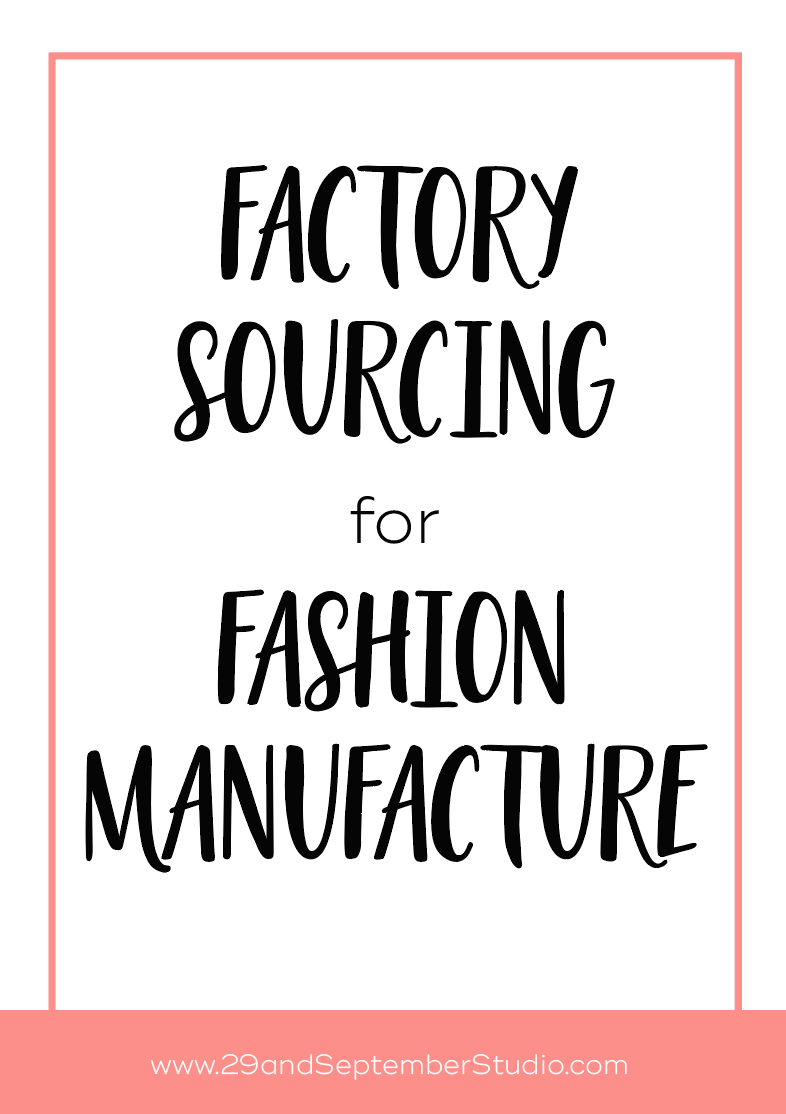

























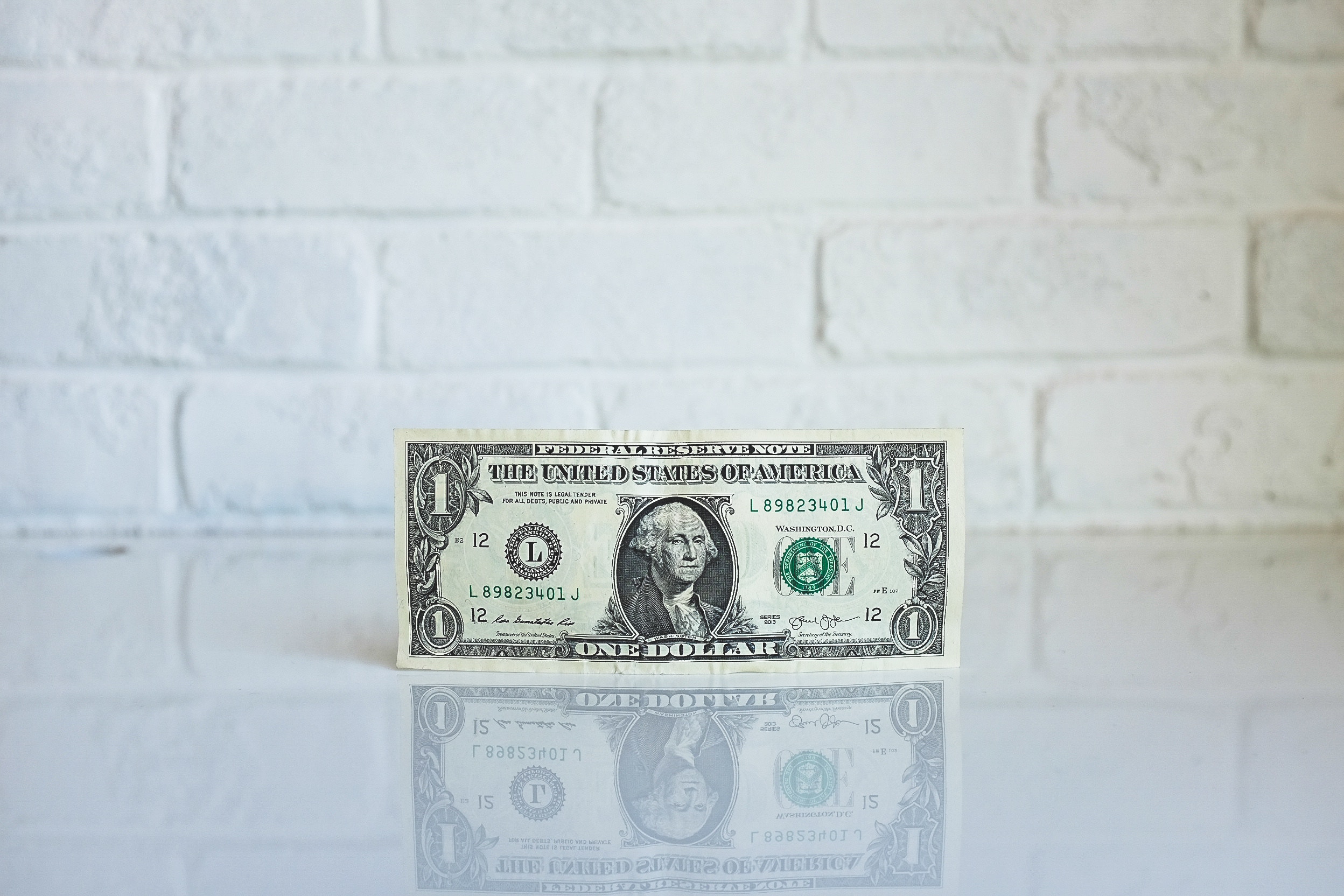




















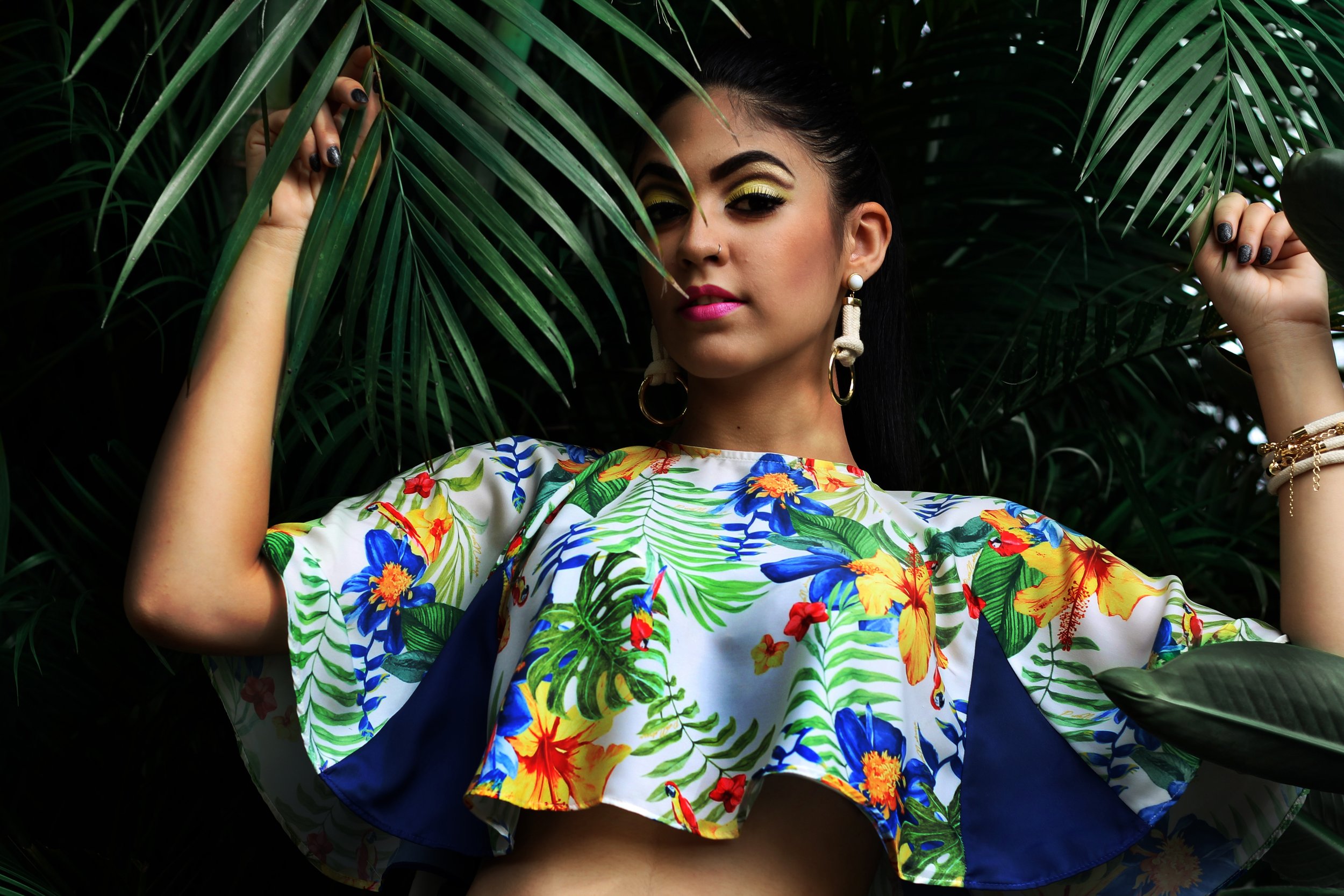







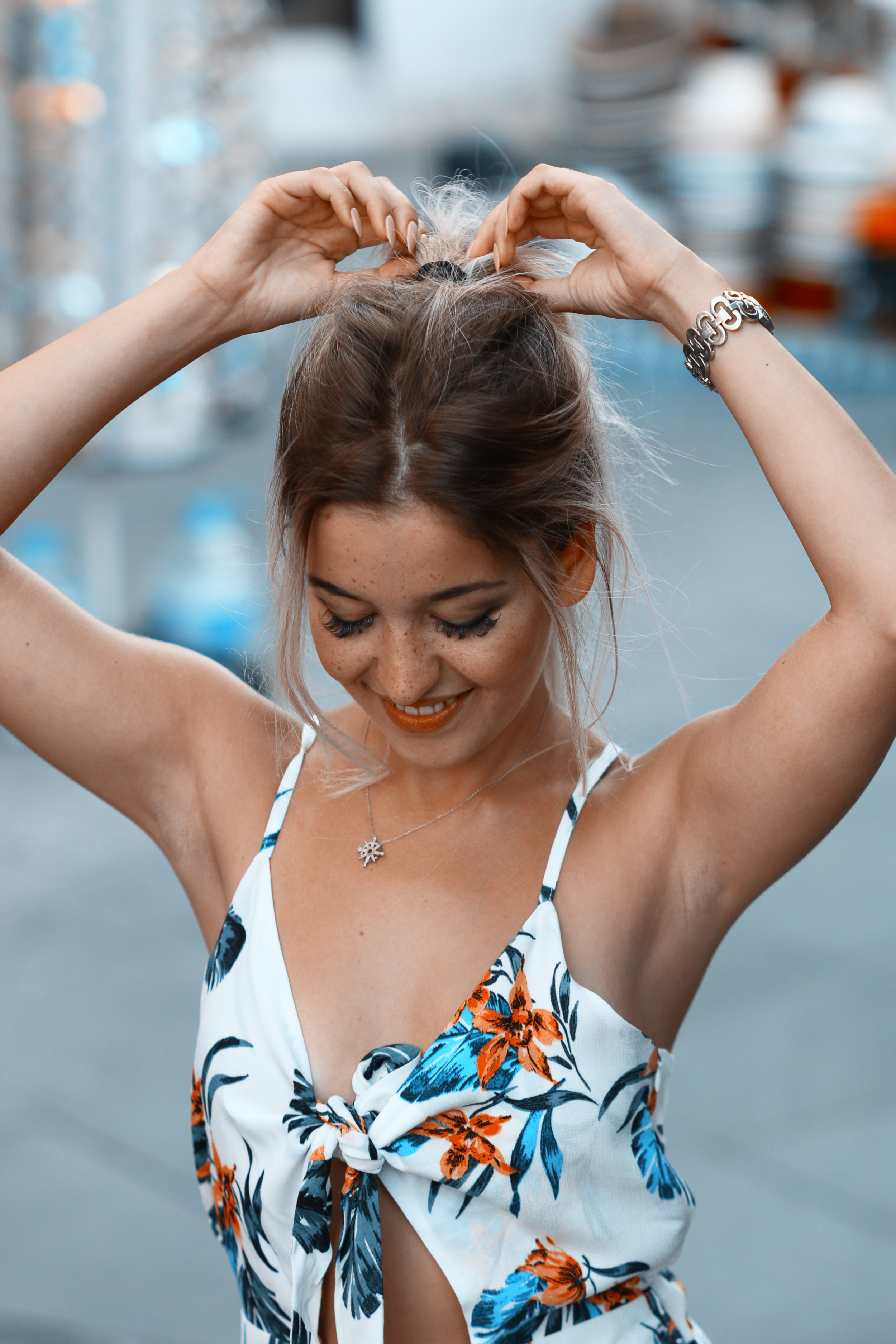




















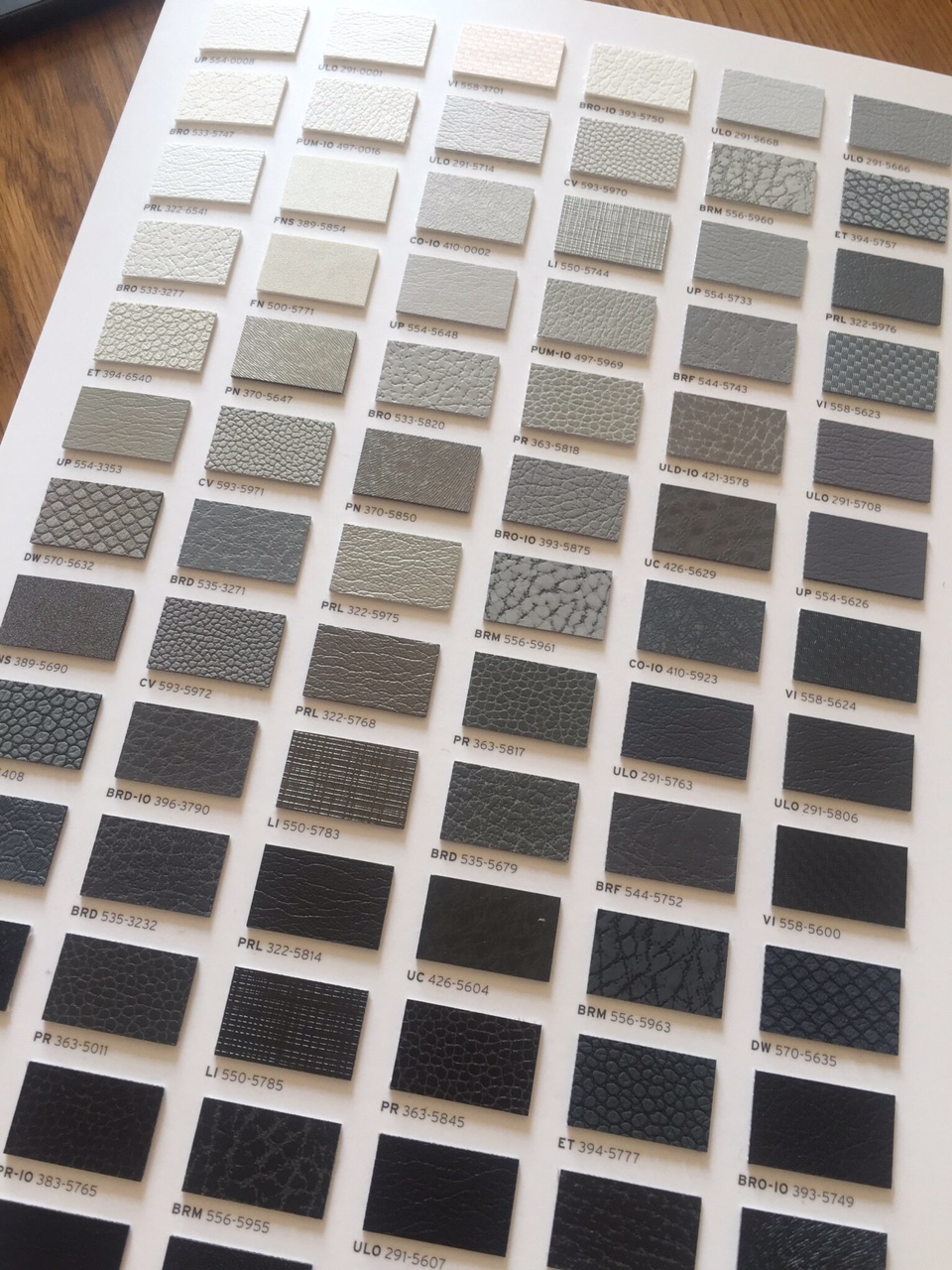




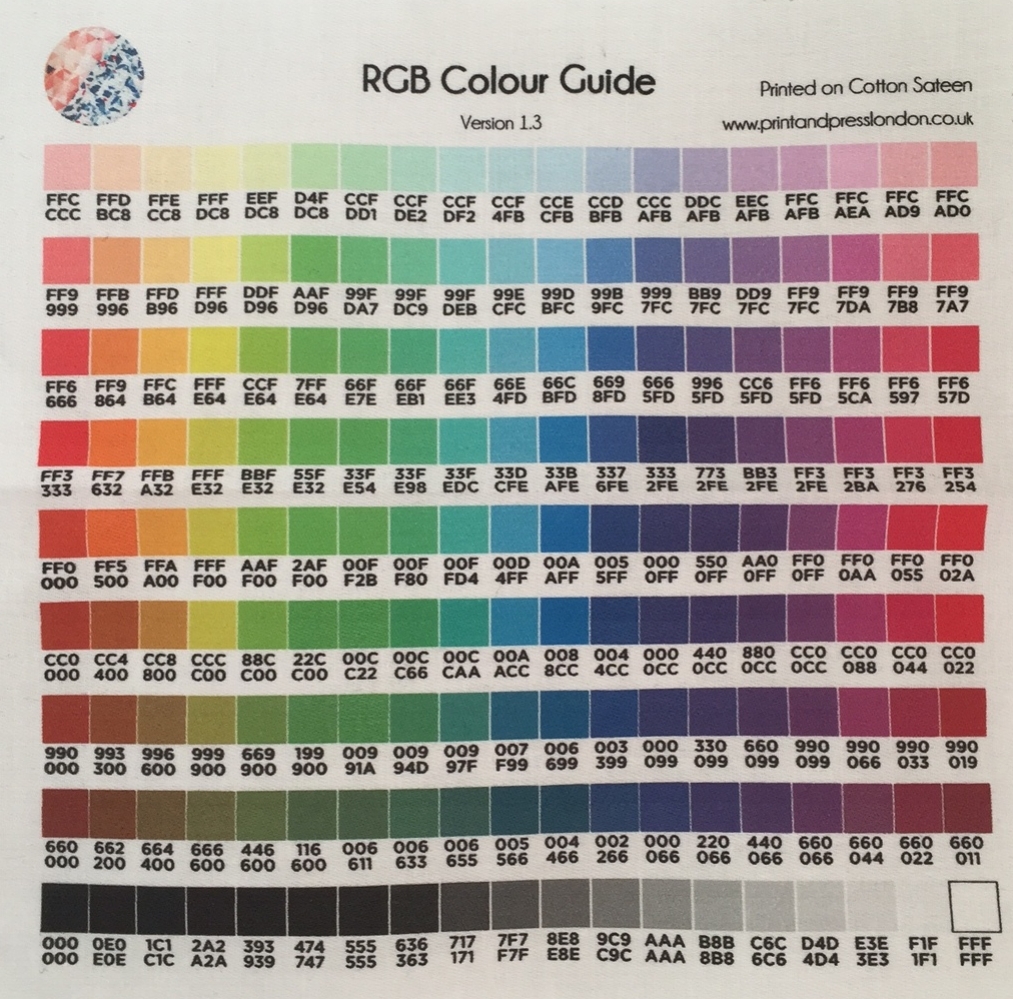


































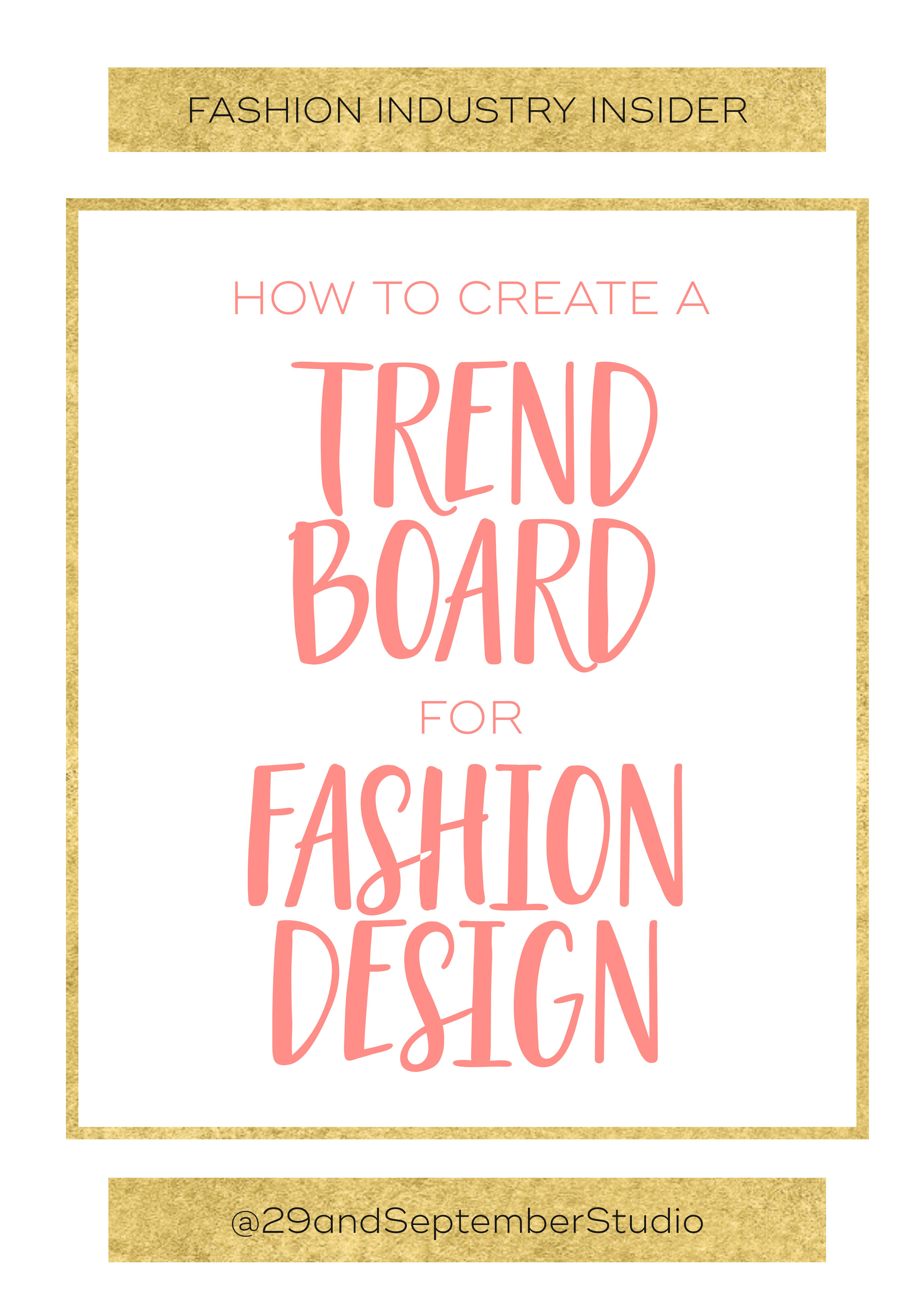








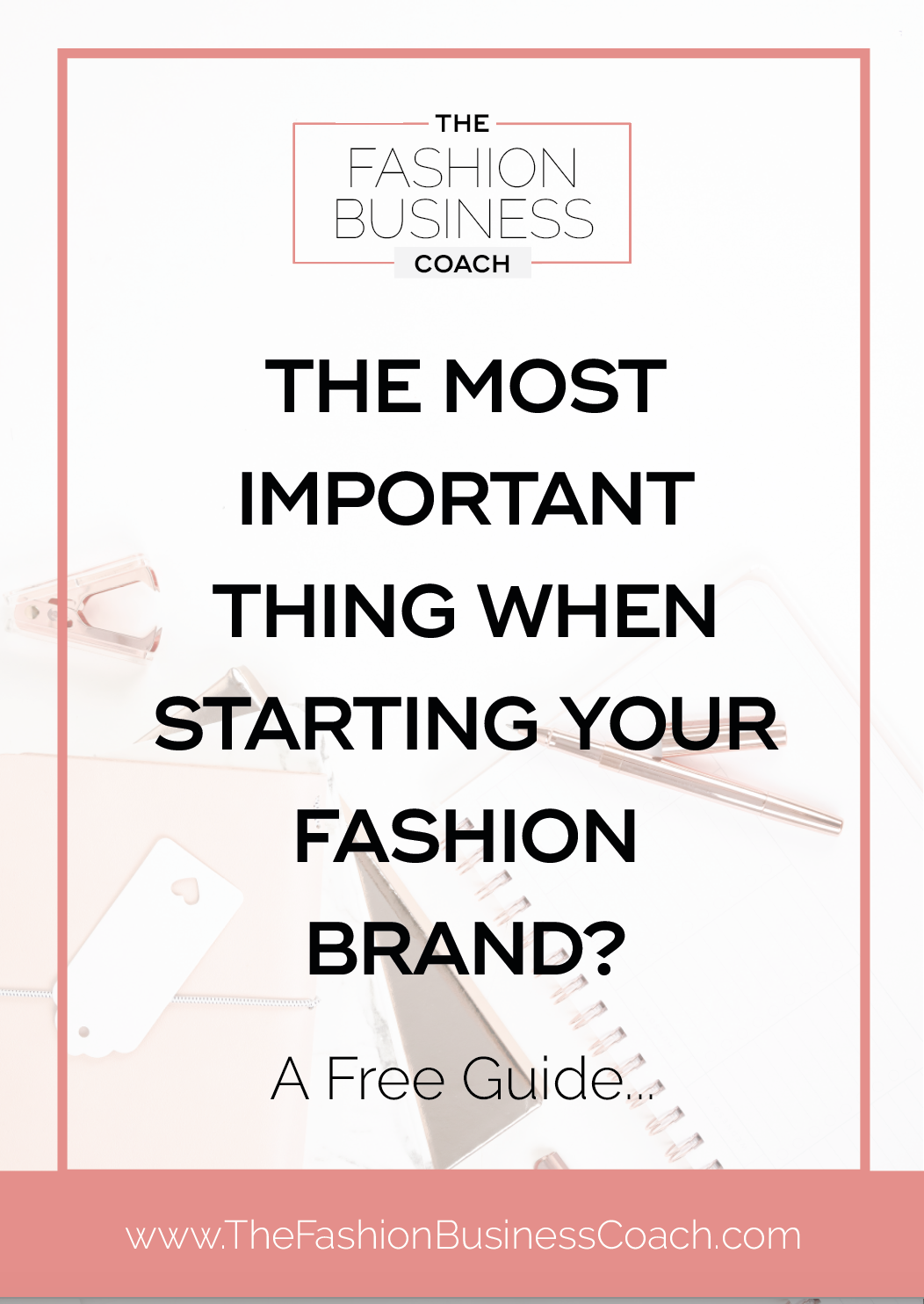
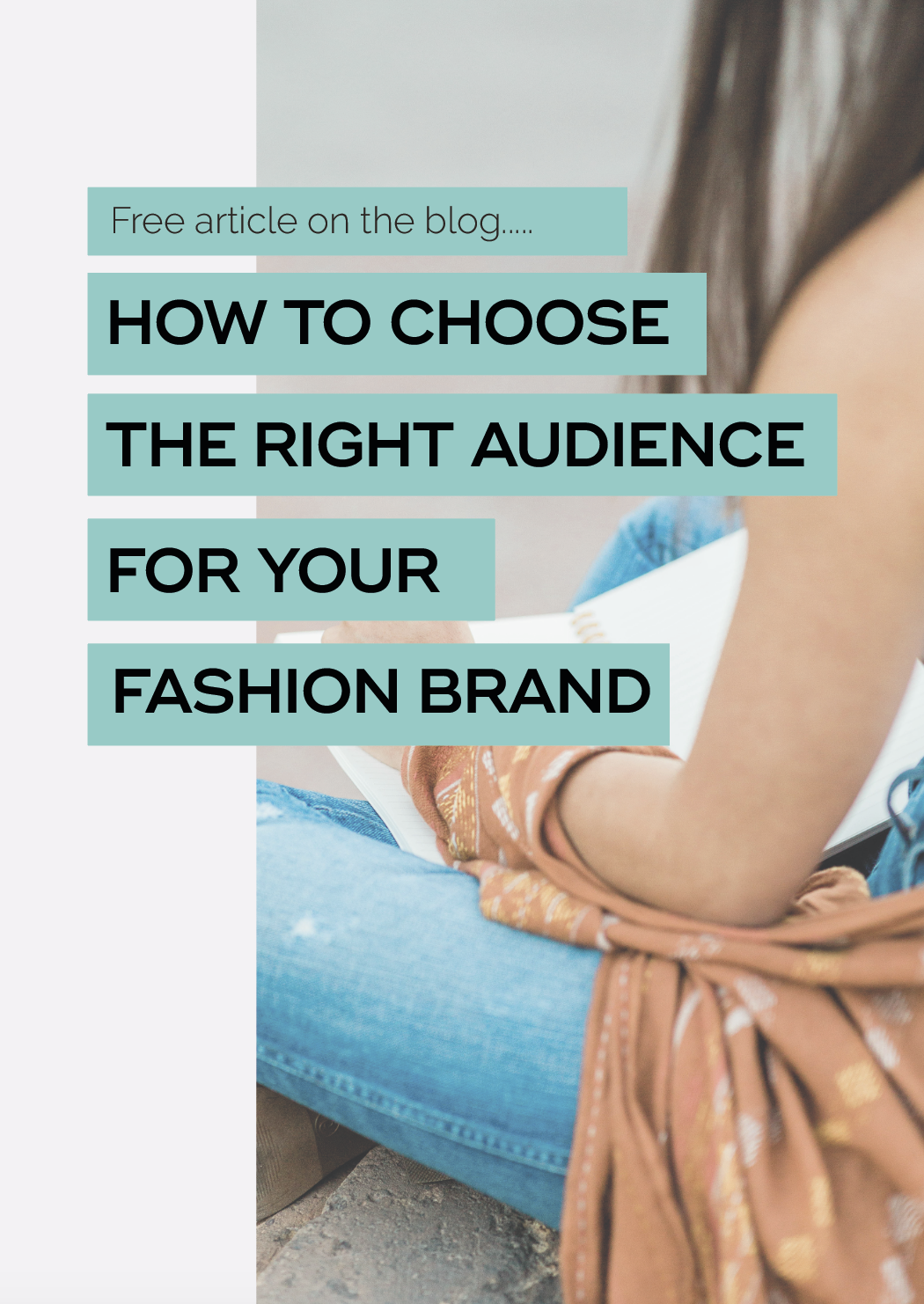

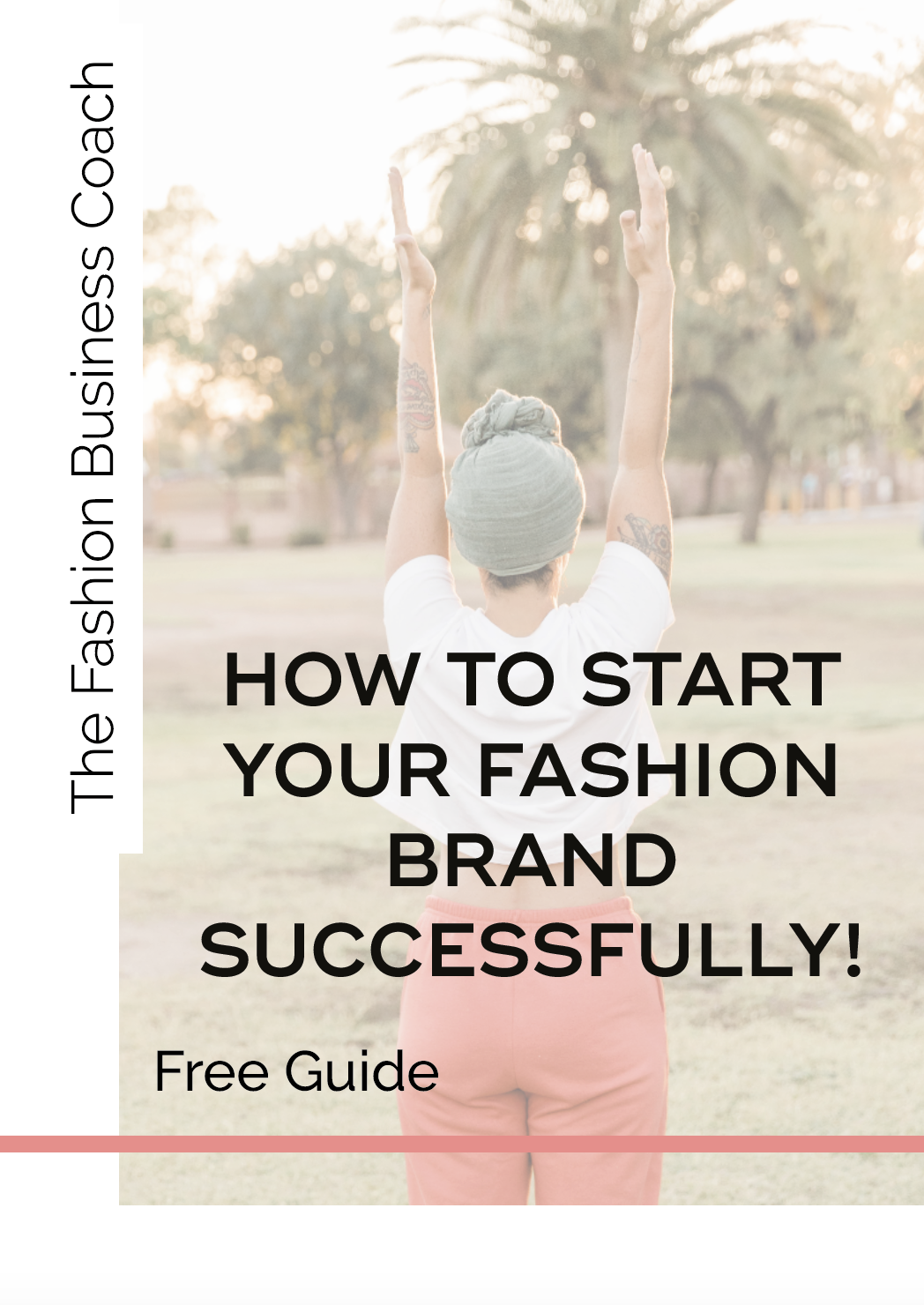

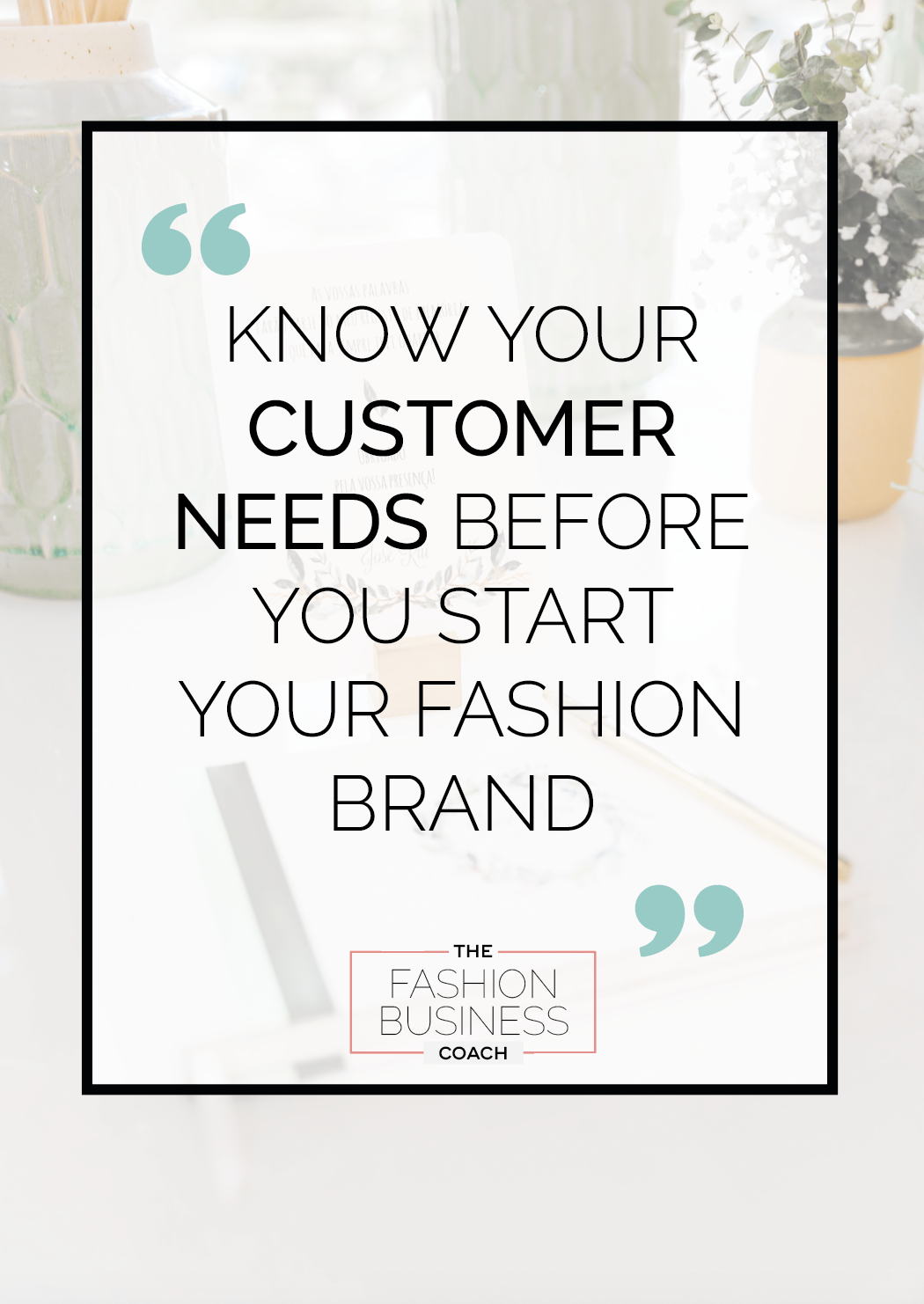
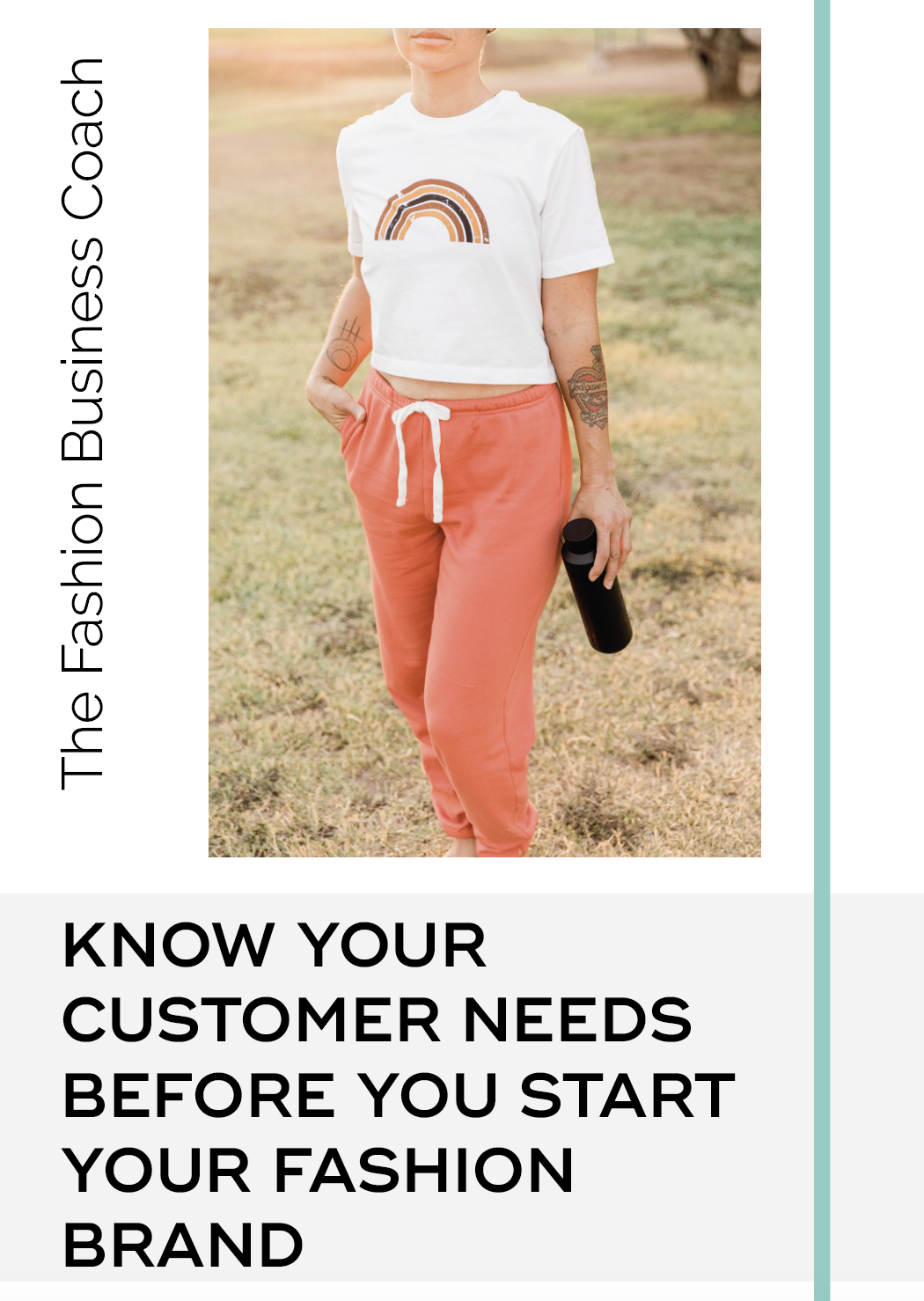


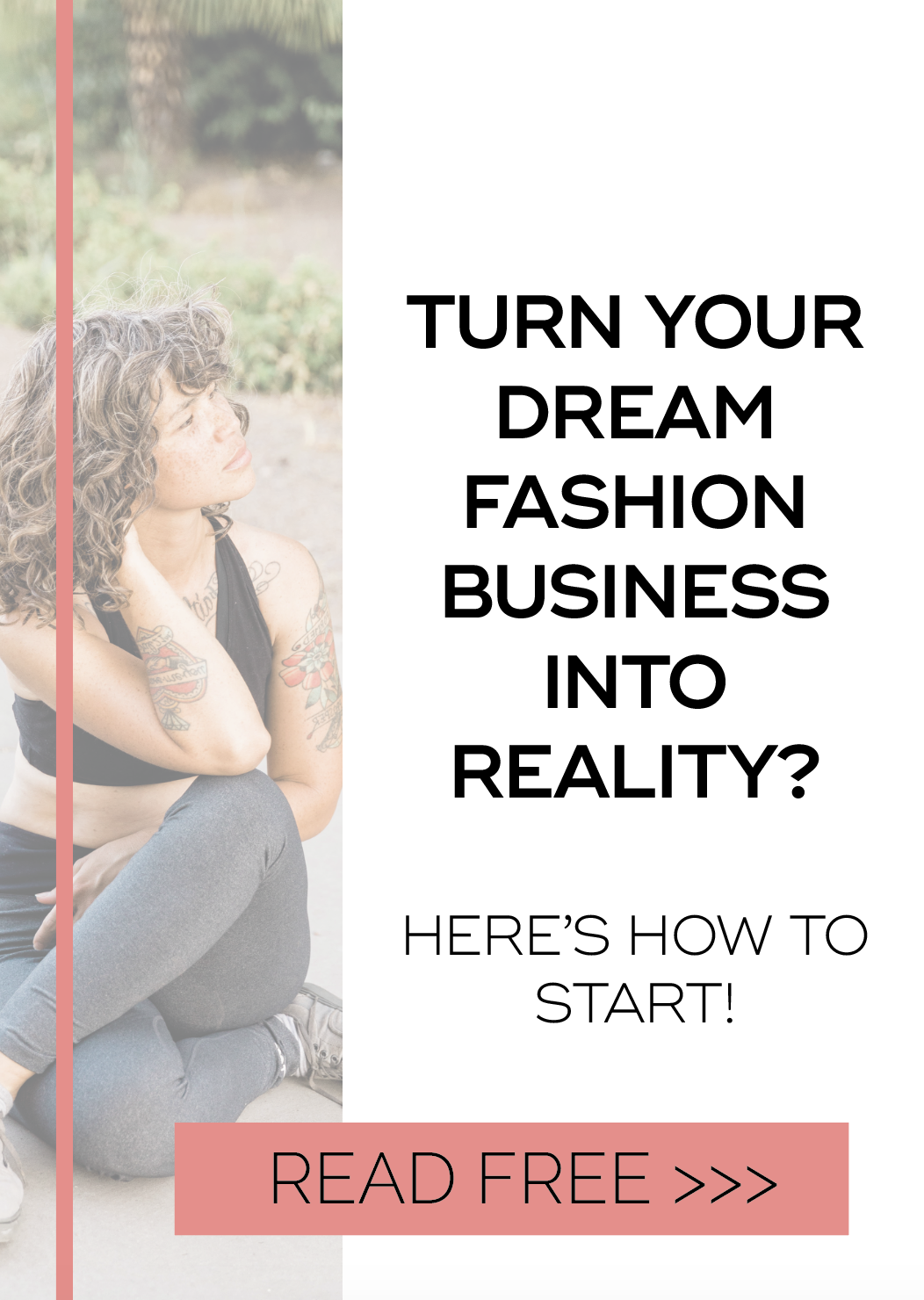
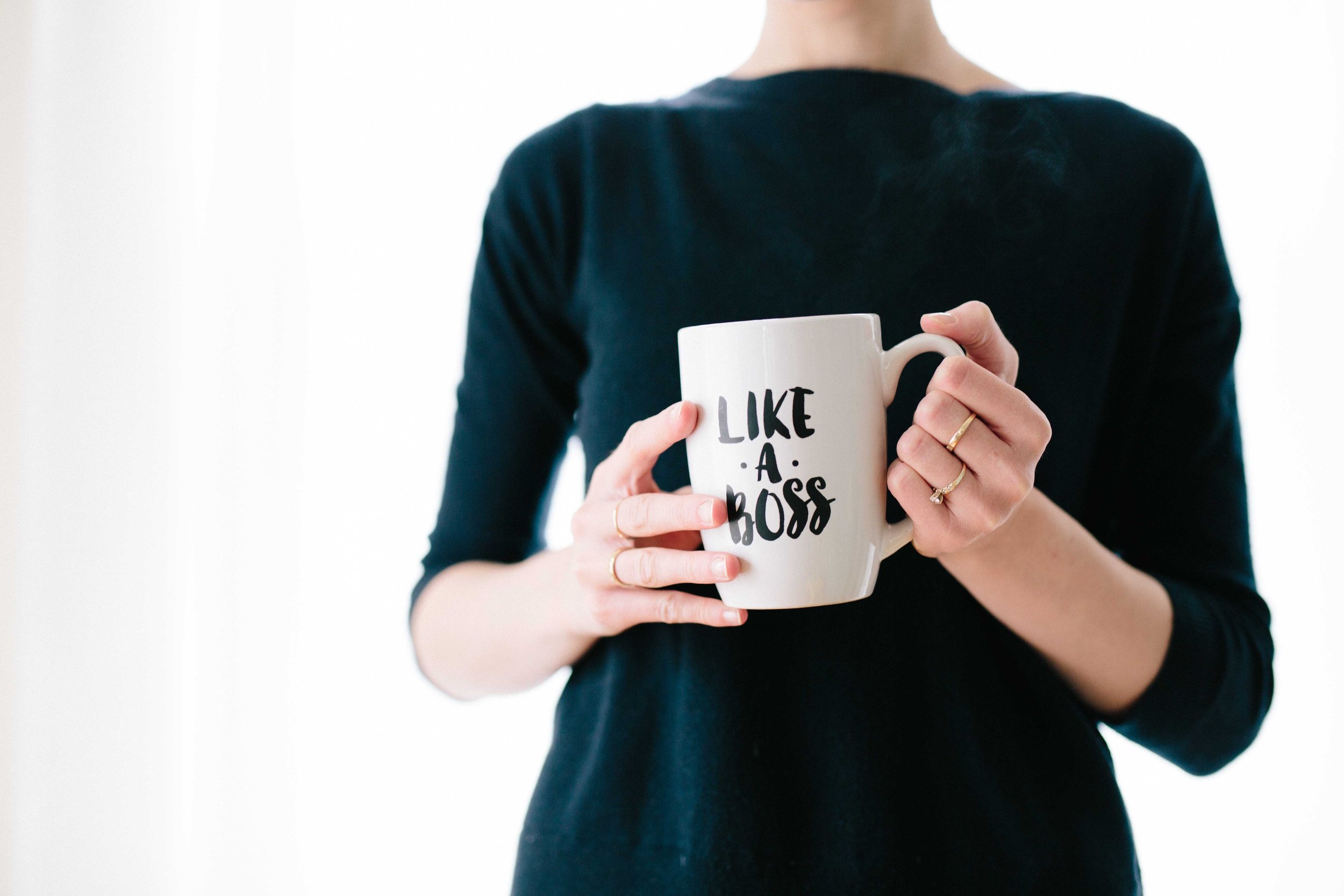












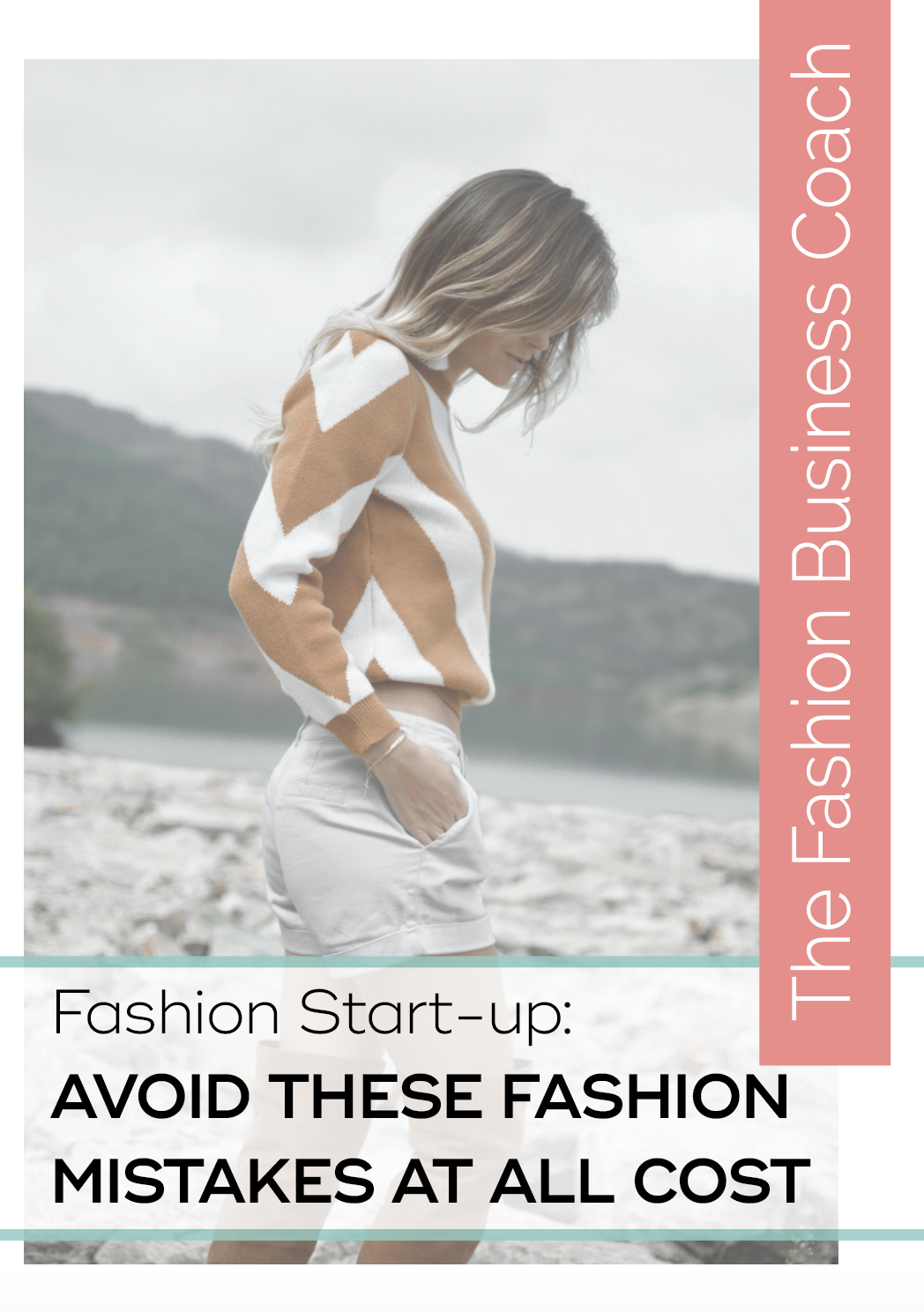

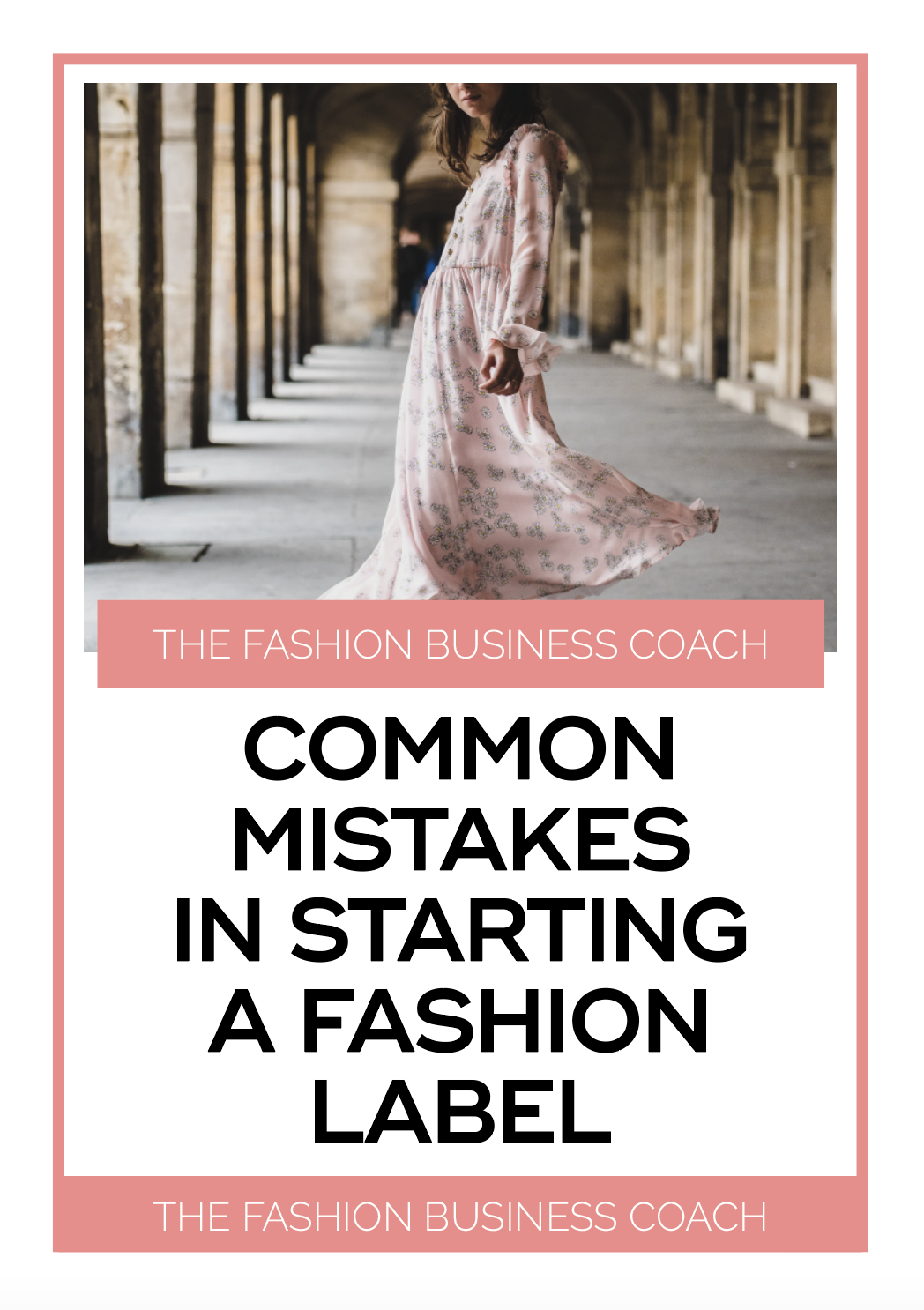


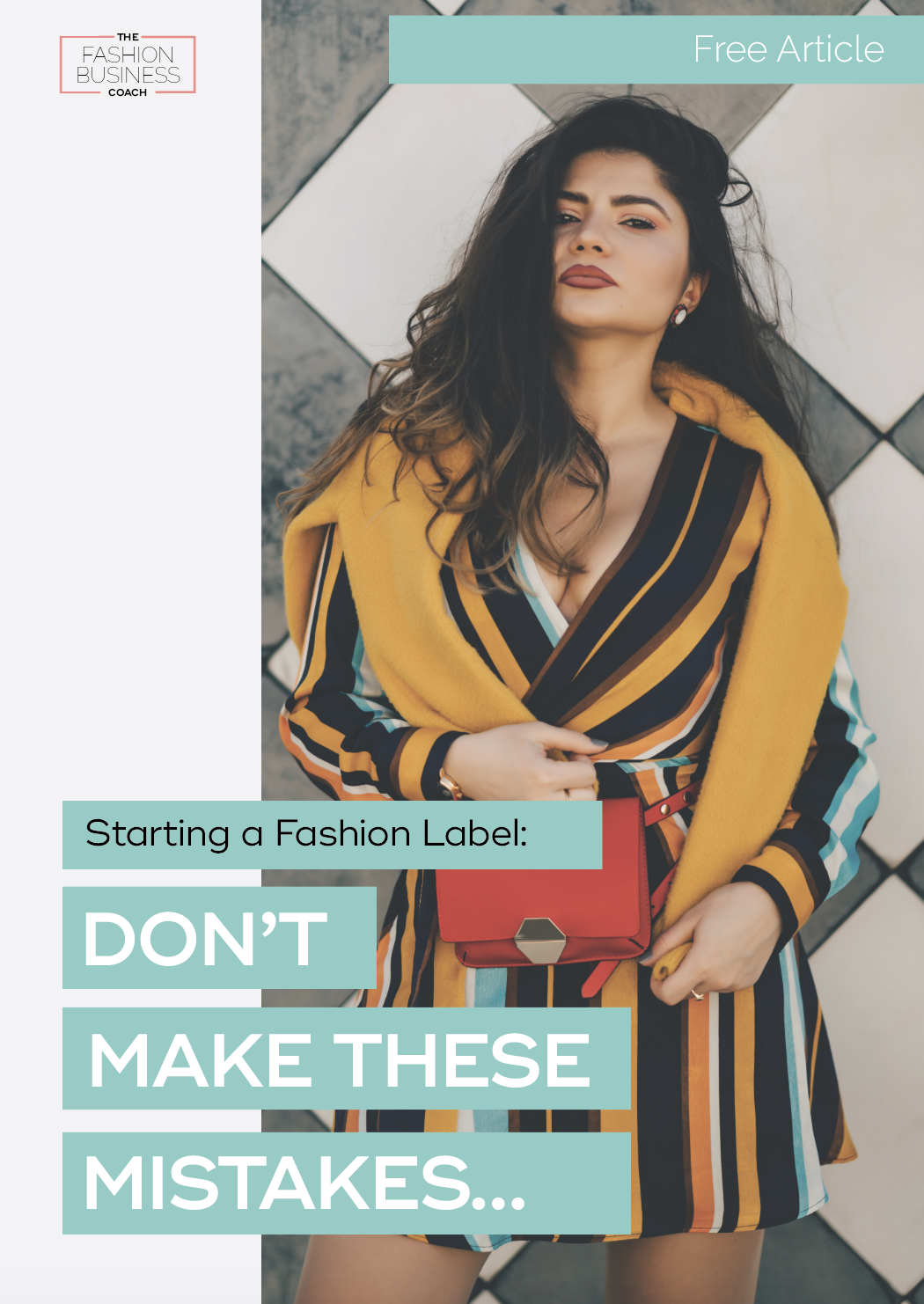
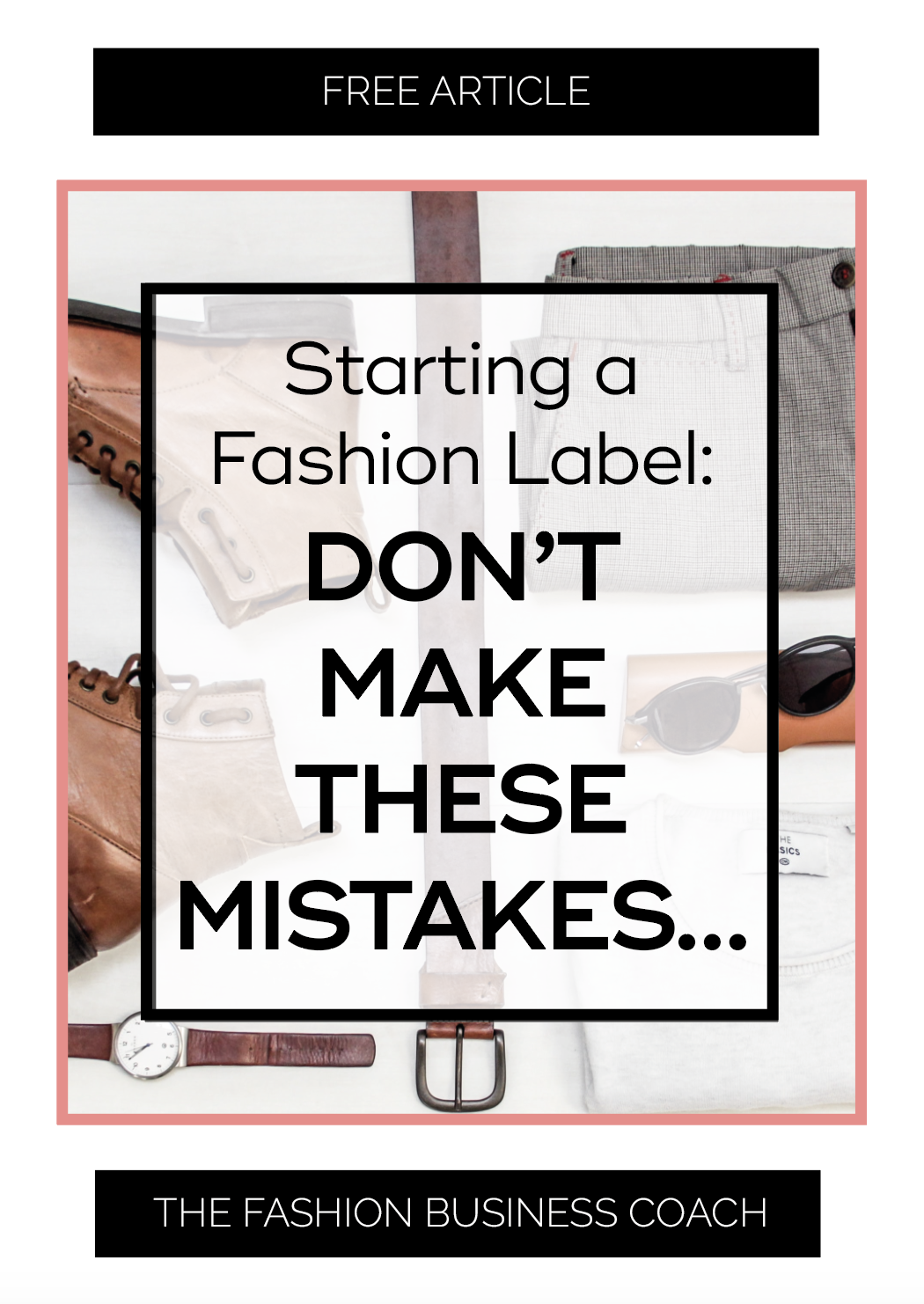
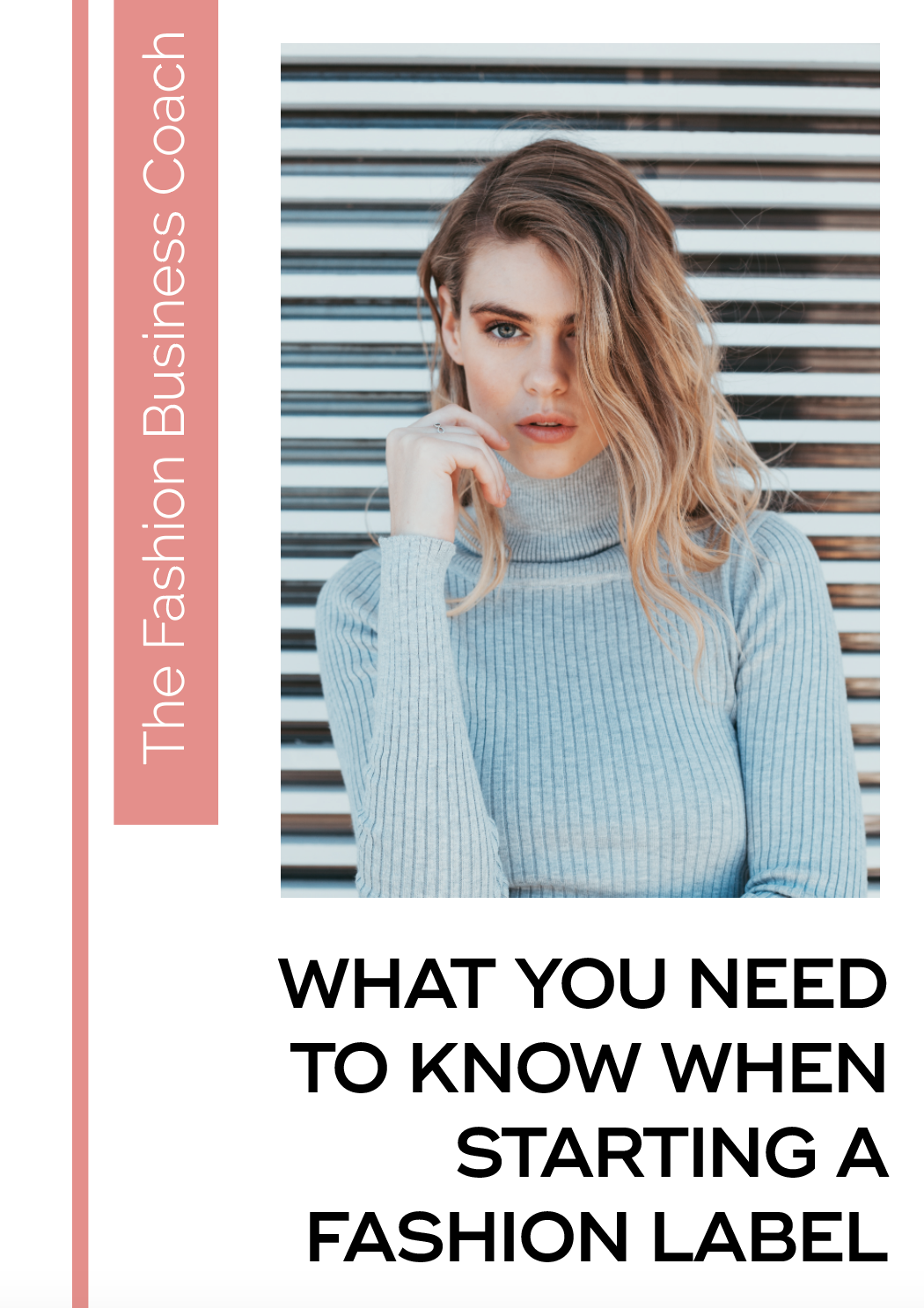

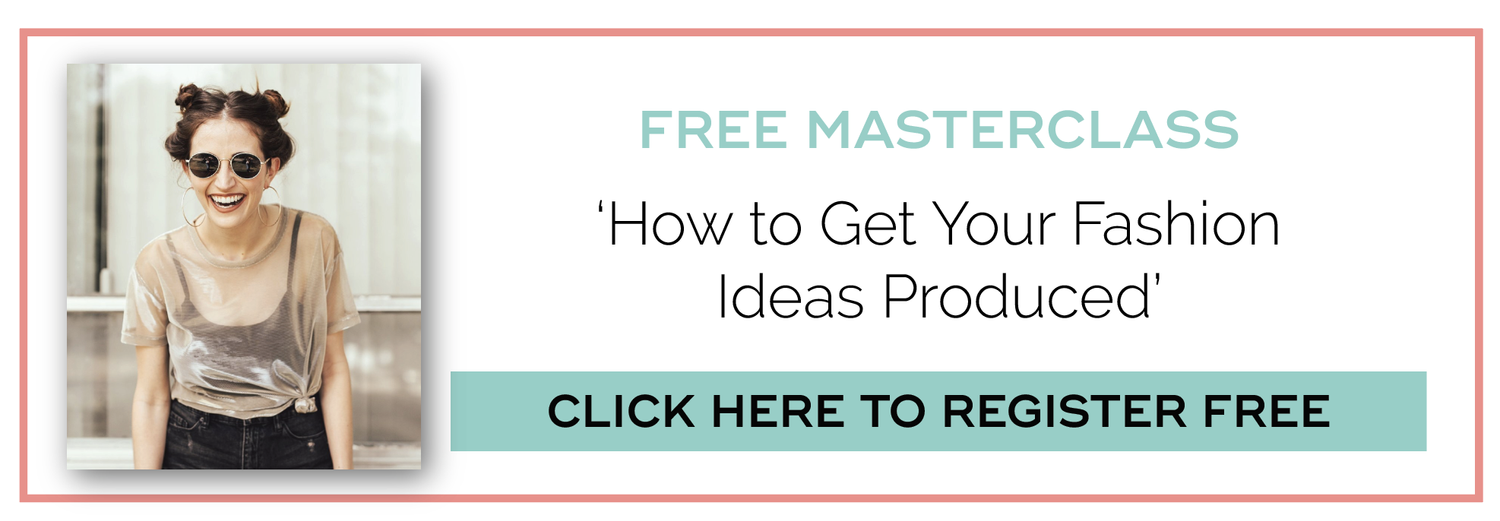




Pickleball outfit inspiration……